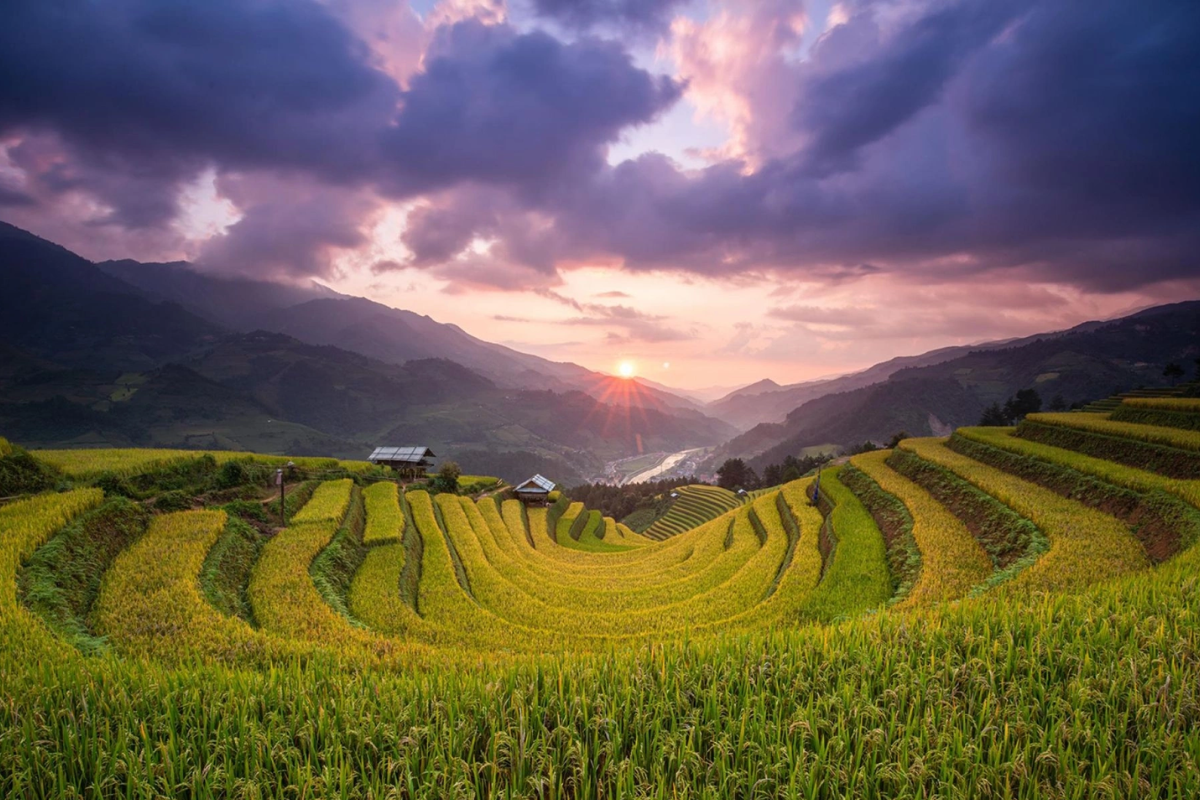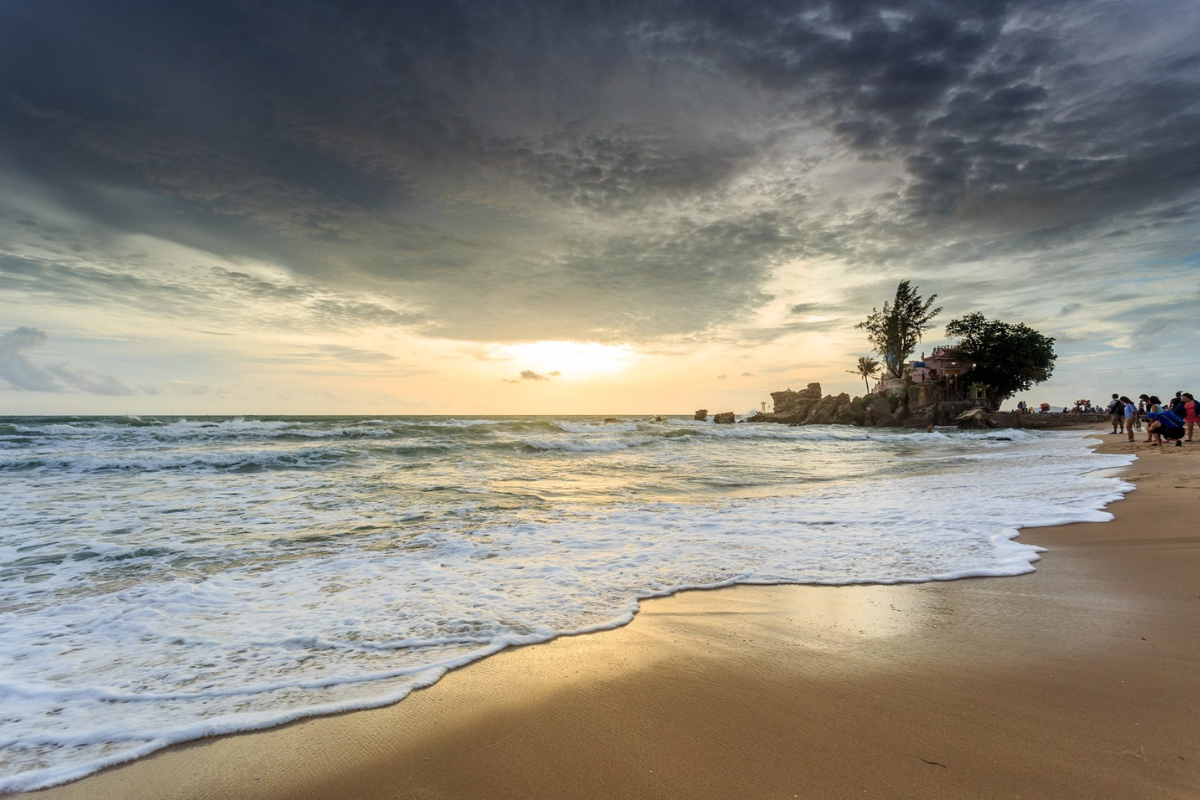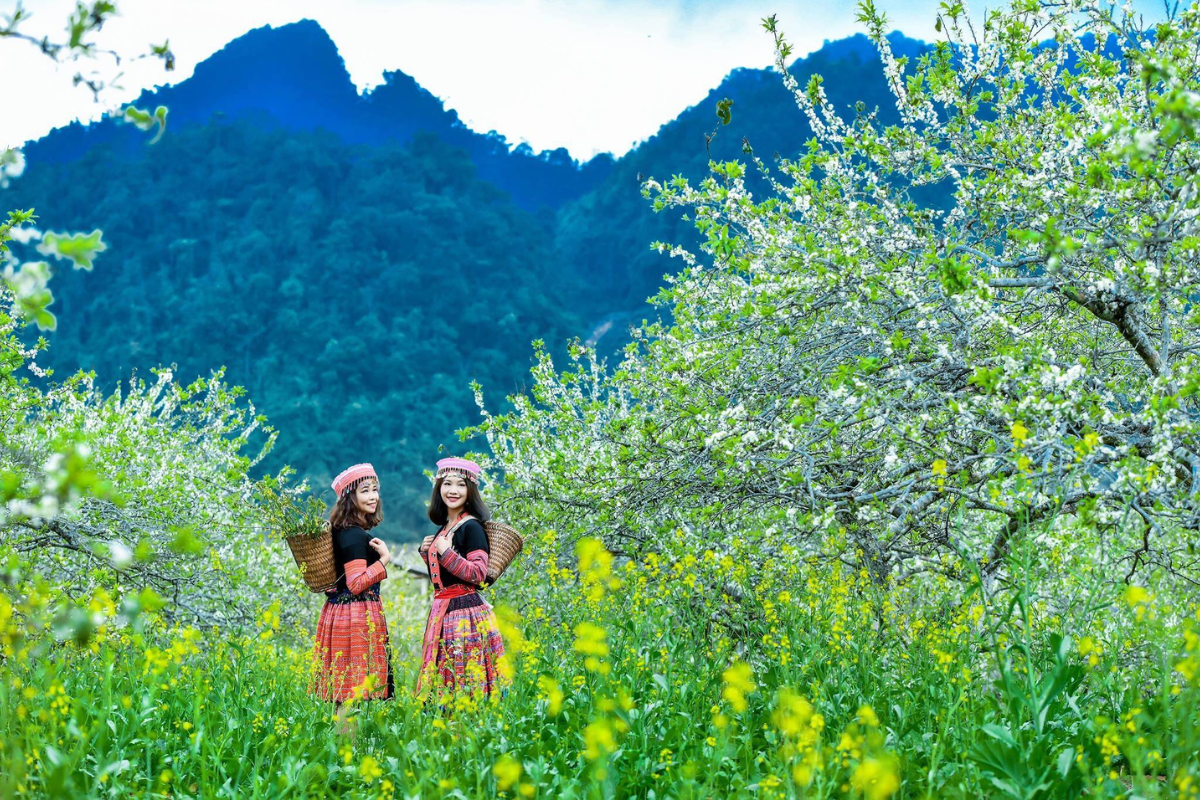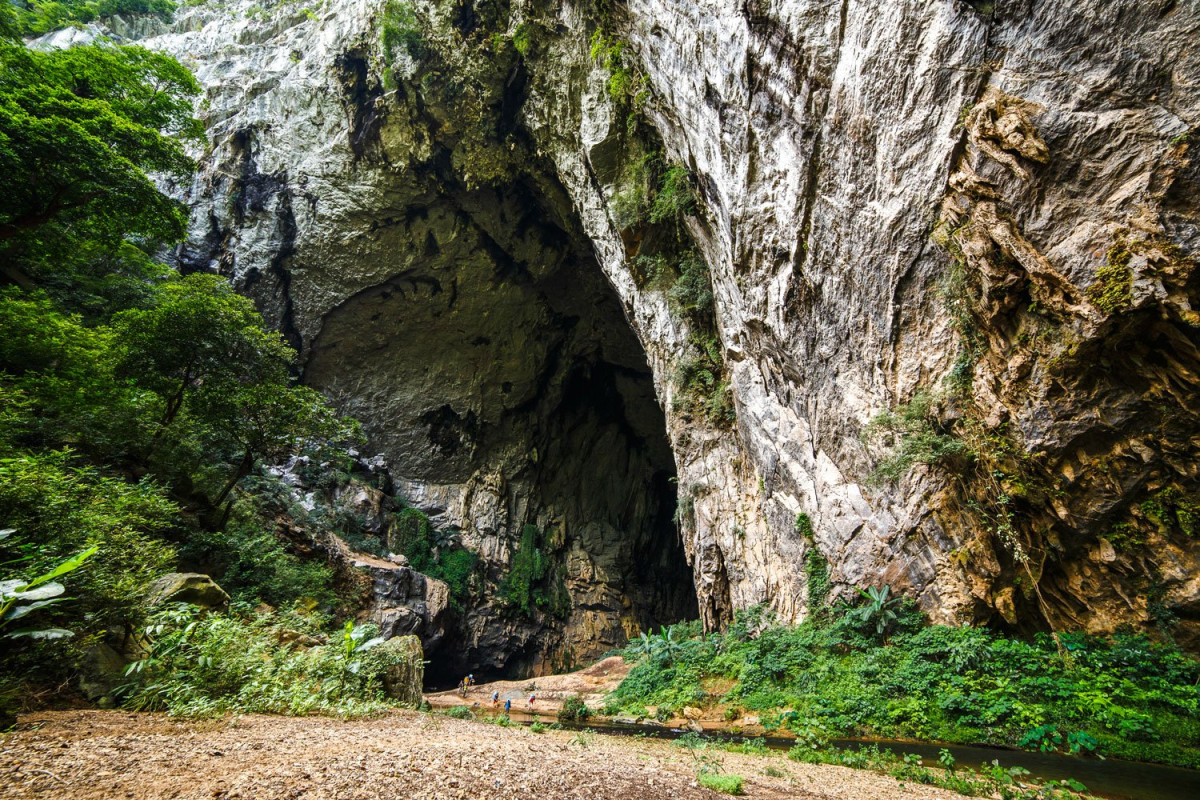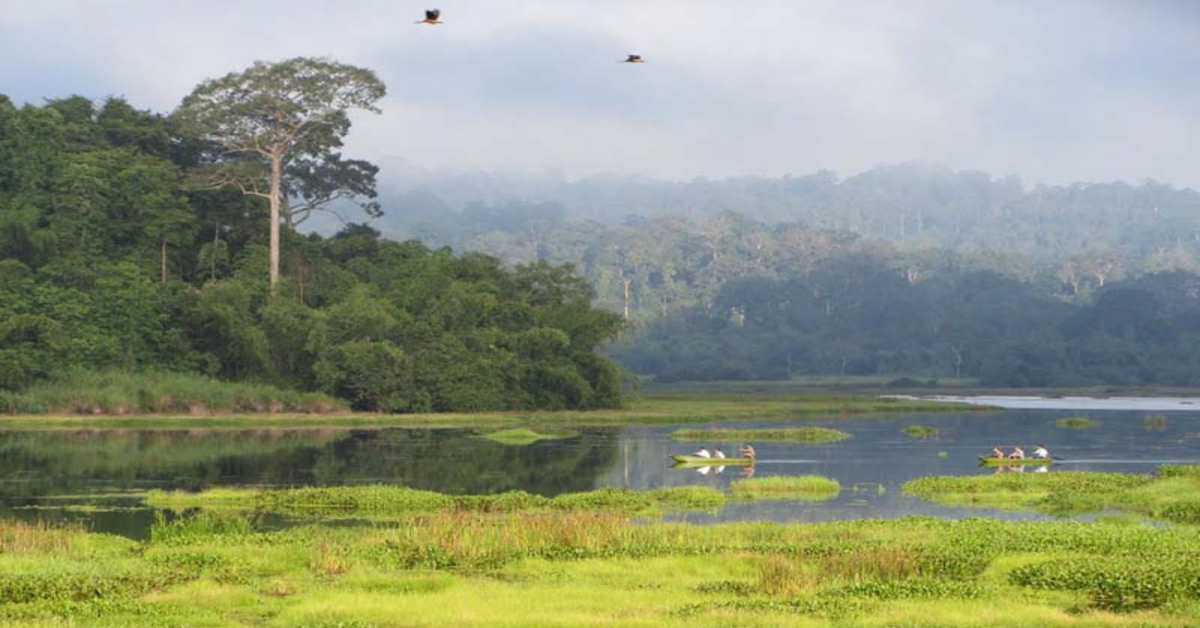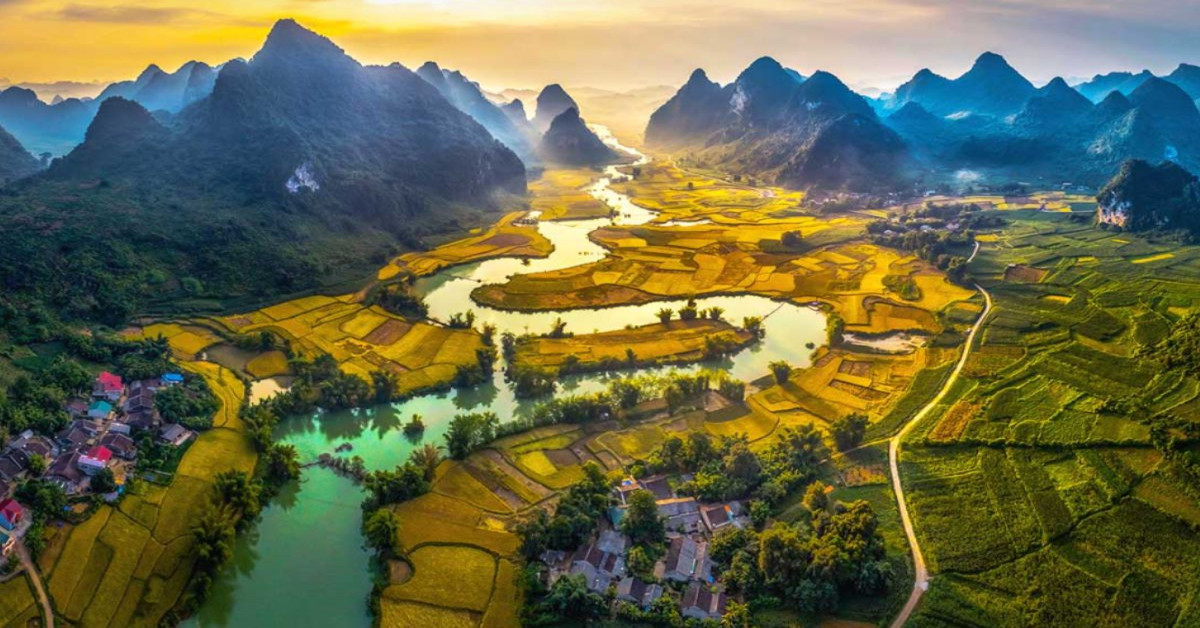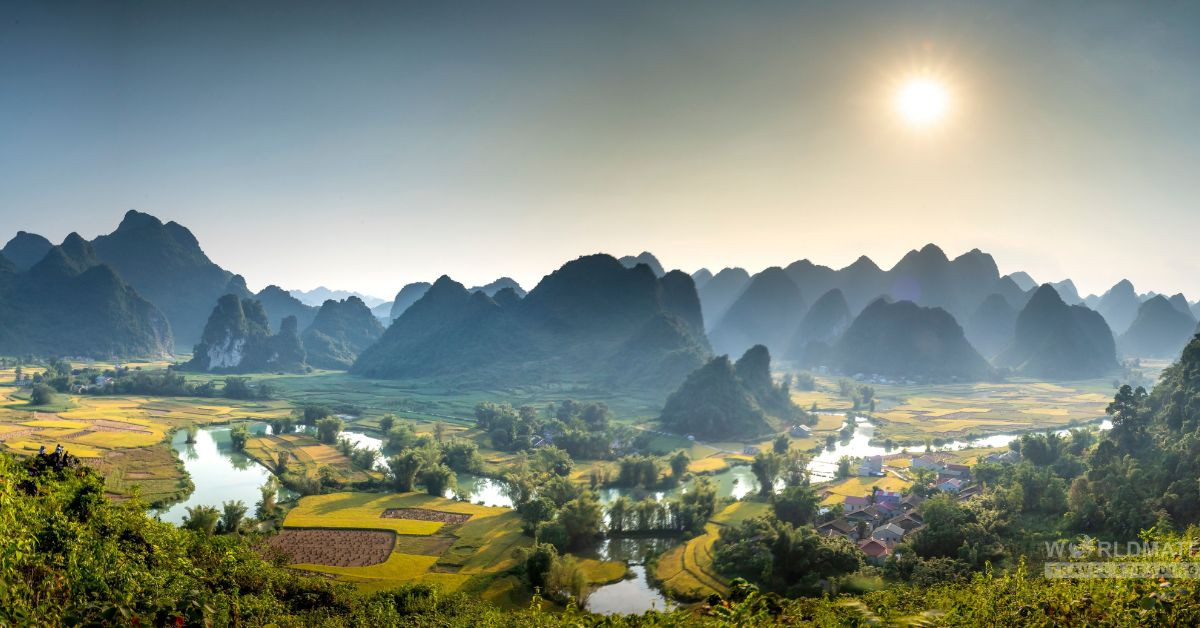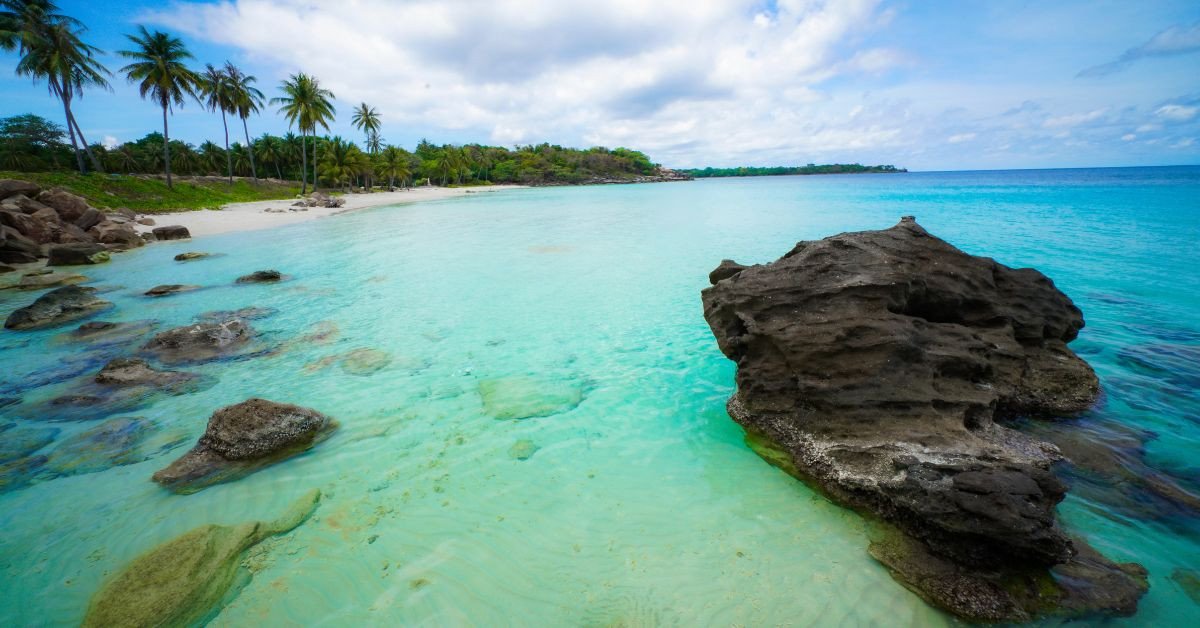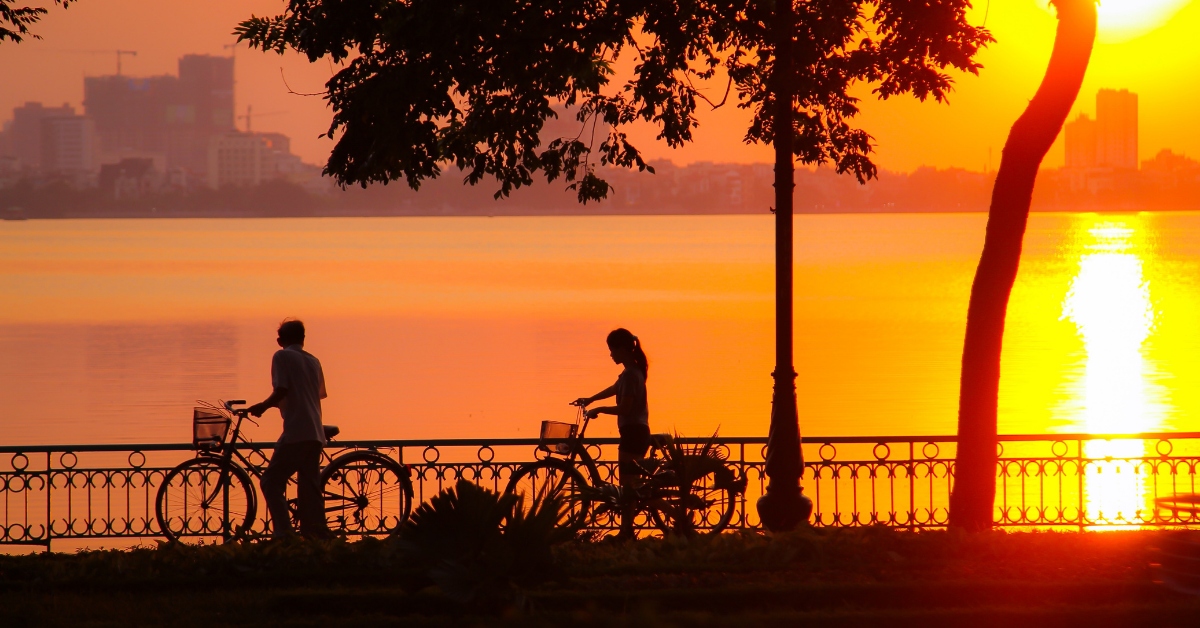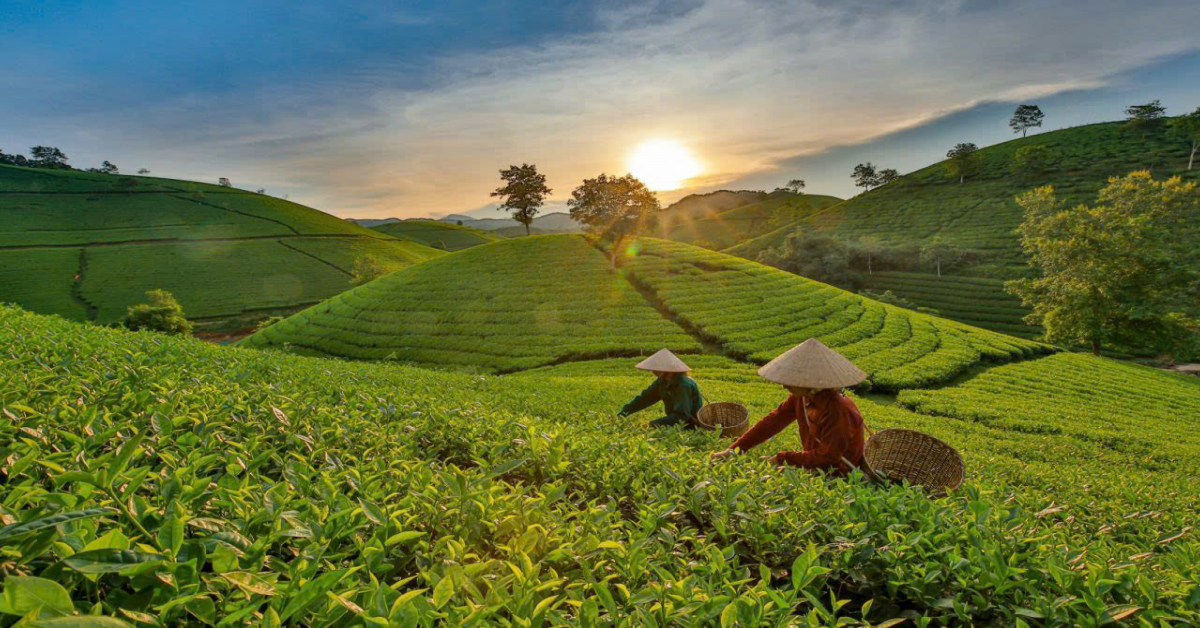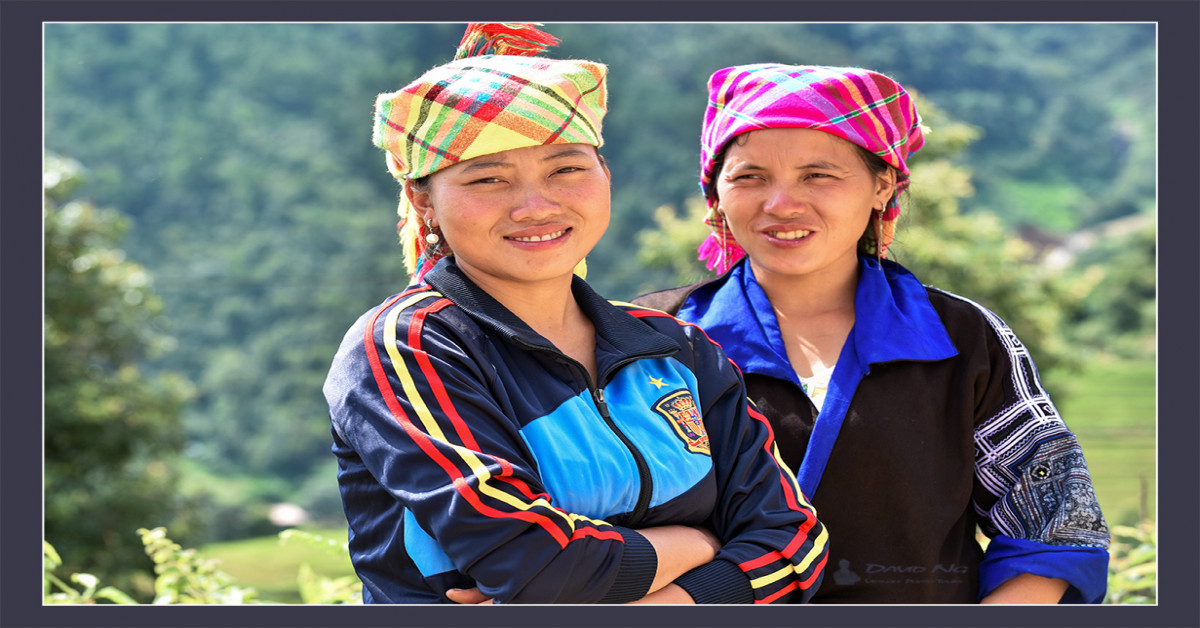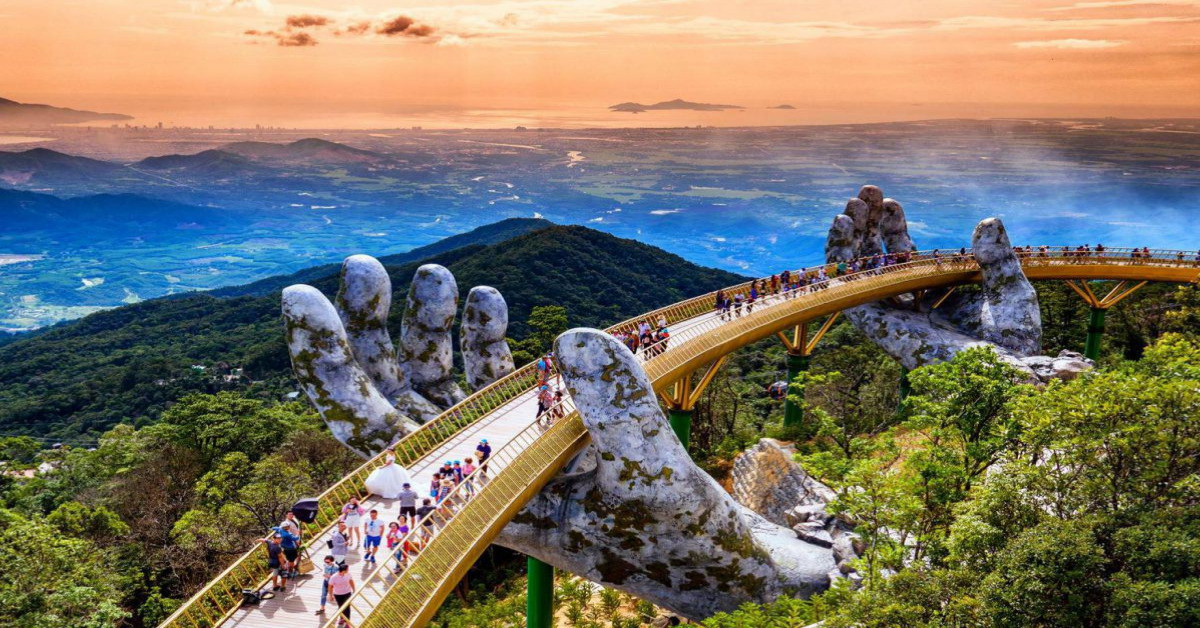A Filipino's Guide to Exploring the Wonders of Vietnam
Are you a Filipino planning a trip to Vietnam? Prepare to immerse yourself in a rich tapestry of history, breathtaking landscapes, vibrant culture, and mouthwatering cuisine. To make the most of your journey, here are ten essential travel tips that will help you navigate this beautiful country with ease.
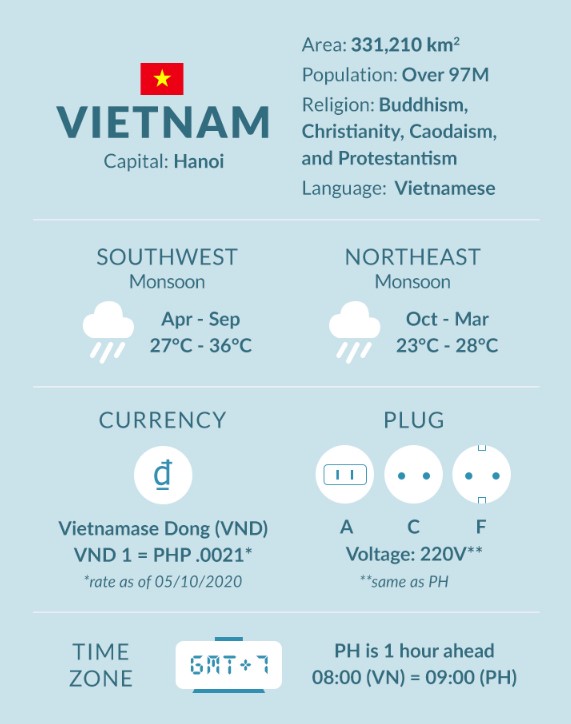
Best Time for Filipino tourists to Visit Vietnam:
Vietnam's climate varies significantly from region to region. It's crucial to consider the weather when planning your trip. Generally, the best time to visit is during spring (March to May) and autumn (September to November) when the weather is pleasant and rainfall is low across most of the country. However, specific regions may have different optimal times:
- Northern Vietnam: March to May and September to November
- Central Vietnam: February to August
- Southern Vietnam: December to April
The spring months of March to May offer mild temperatures, low rainfall, and fewer crowds across Vietnam. Autumn from September to November is another excellent time, with comfortable weather, fewer tourists, and colorful foliage in some areas. The summer months can be hot and humid, especially in the south, while the winter in the north can be cool and wet.
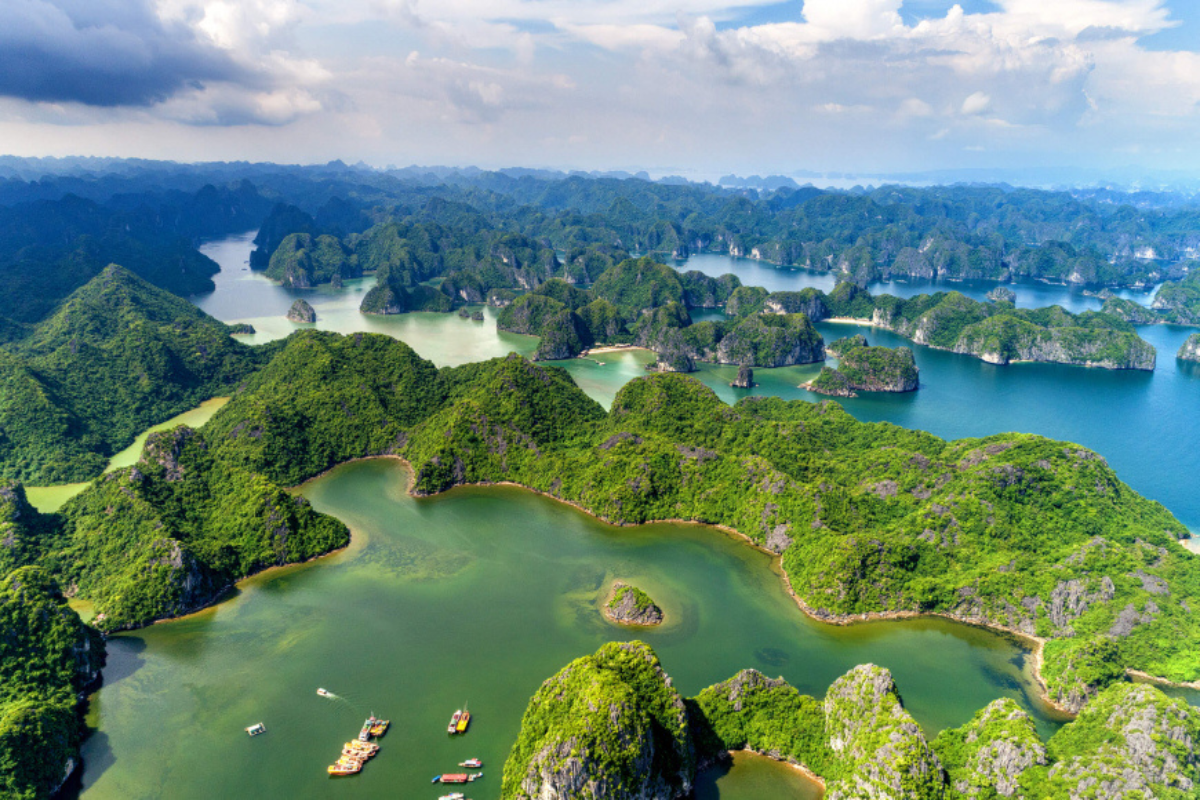
When planning your Vietnam trip, be sure to research the typical weather patterns for the regions and months you are considering visiting. This will help ensure you have the best possible experience during your time in this diverse and beautiful country.
Must-Visit Destinations in Vietnam for tourists from Philippines:
Vietnam boasts an array of stunning destinations. Here are some of the top places to include in your Vietnam itinerary:
Hanoi:
Hanoi, the capital city of Vietnam, is a vibrant and captivating destination that seamlessly blends the charms of French colonial architecture, ancient temples, and bustling markets. Nestled in the northern part of the country, Hanoi showcases a rich cultural heritage and offers a diverse range of experiences for visitors.
One of the prominent aspects of Hanoi's allure is its architectural landscape, heavily influenced by the French colonization period in the late 19th and early 20th centuries. Strolling through the streets of the city, you'll be enchanted by the elegant French colonial buildings that line the boulevards. The iconic Opera House, built in neoclassical style, serves as a testament to this architectural legacy. The grandeur of structures such as the Presidential Palace and the Hanoi Cathedral (St. Joseph's Cathedral) further highlight the city's French-inspired aesthetics.
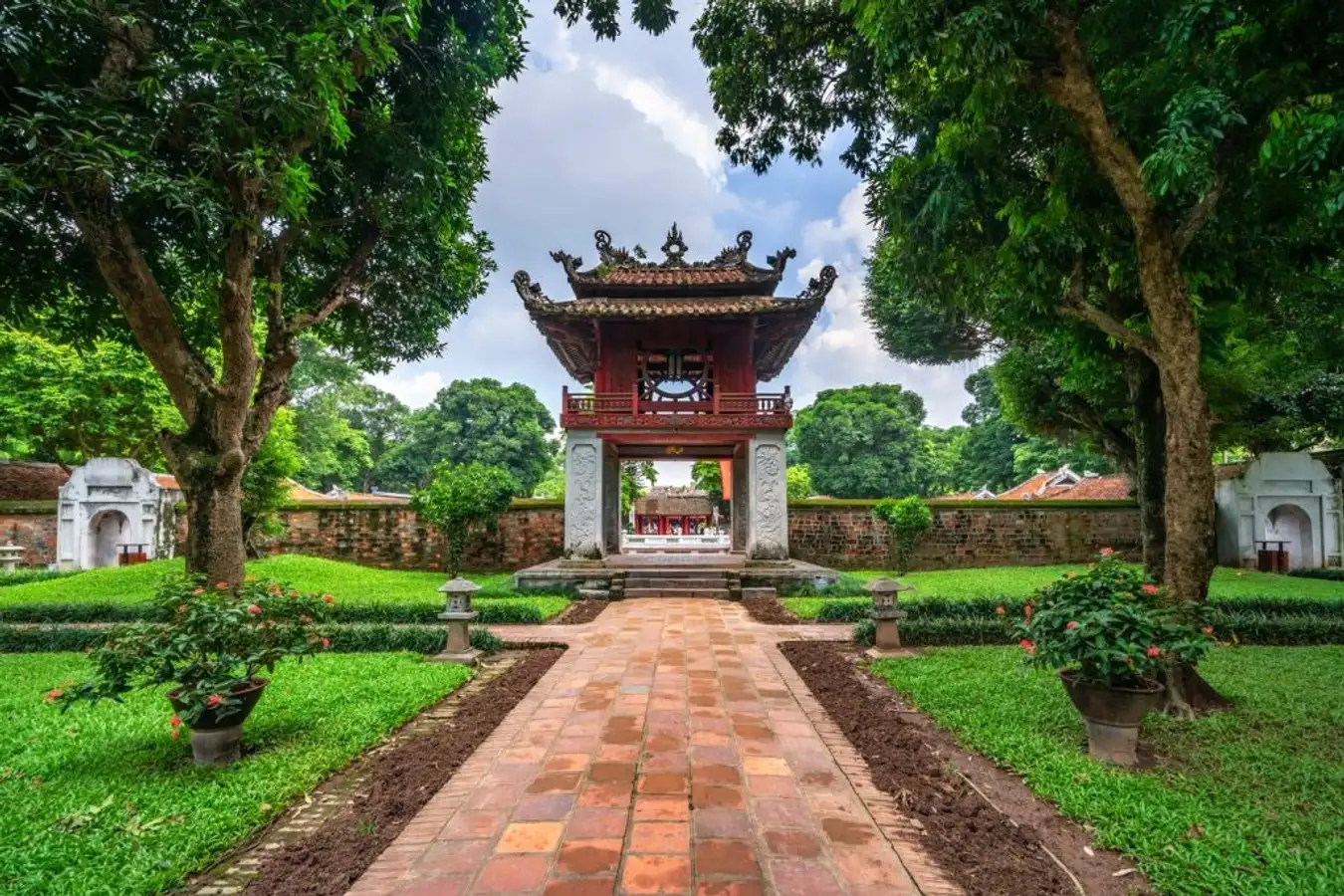
The Temple of Literature
Beyond the colonial facades, Hanoi boasts a wealth of ancient temples and pagodas that reflect the city's spiritual side. The Temple of Literature, established in 1070, is one of the oldest universities in the world and dedicated to Confucius. Its tranquil gardens and well-preserved architecture attract visitors seeking insight into Vietnam's scholarly past. Another must-visit religious site is the One Pillar Pagoda, an iconic symbol of Hanoi. Built atop a single stone pillar rising from a picturesque lotus pond, the pagoda is considered a unique architectural masterpiece and holds deep religious significance in Vietnamese Buddhism.
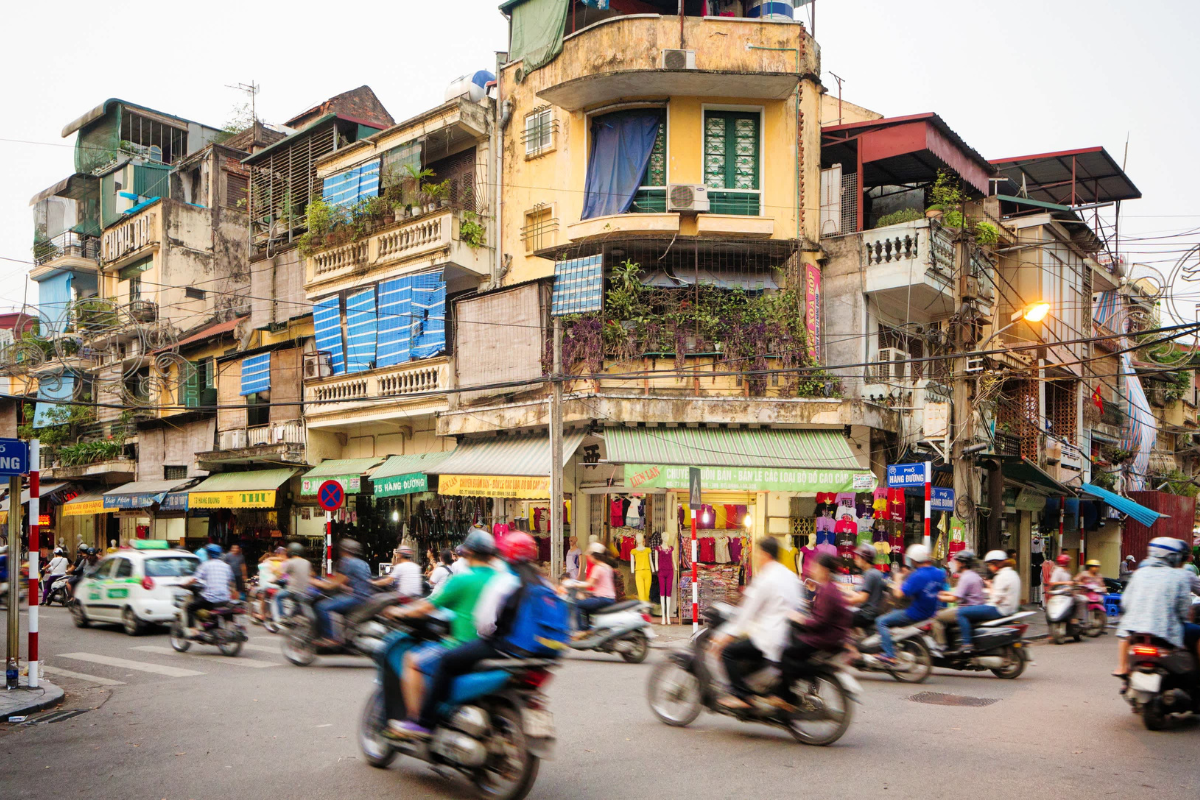
Hanoi Street
Hanoi's charm extends to its vibrant markets, which are a sensory delight for both locals and tourists alike. The Old Quarter, also known as "36 Streets," is a labyrinthine network of narrow alleys brimming with shops, street vendors, and traditional artisans. Here, you can immerse yourself in the hustle and bustle of everyday life, peruse stalls selling everything from silk garments to handmade crafts, and savor the tantalizing aromas of Vietnamese street food. Don't miss the chance to visit Dong Xuan Market, Hanoi's largest indoor market, where you can find a vast array of goods, including clothing, electronics, and fresh produce.
In addition to its architectural wonders, ancient temples, and bustling markets, Hanoi is also home to various museums, art galleries, and theaters that showcase Vietnam's rich history and contemporary arts scene. The Vietnam Museum of Ethnology, for instance, provides an insightful exploration of the country's diverse ethnic groups through exhibits and interactive displays.
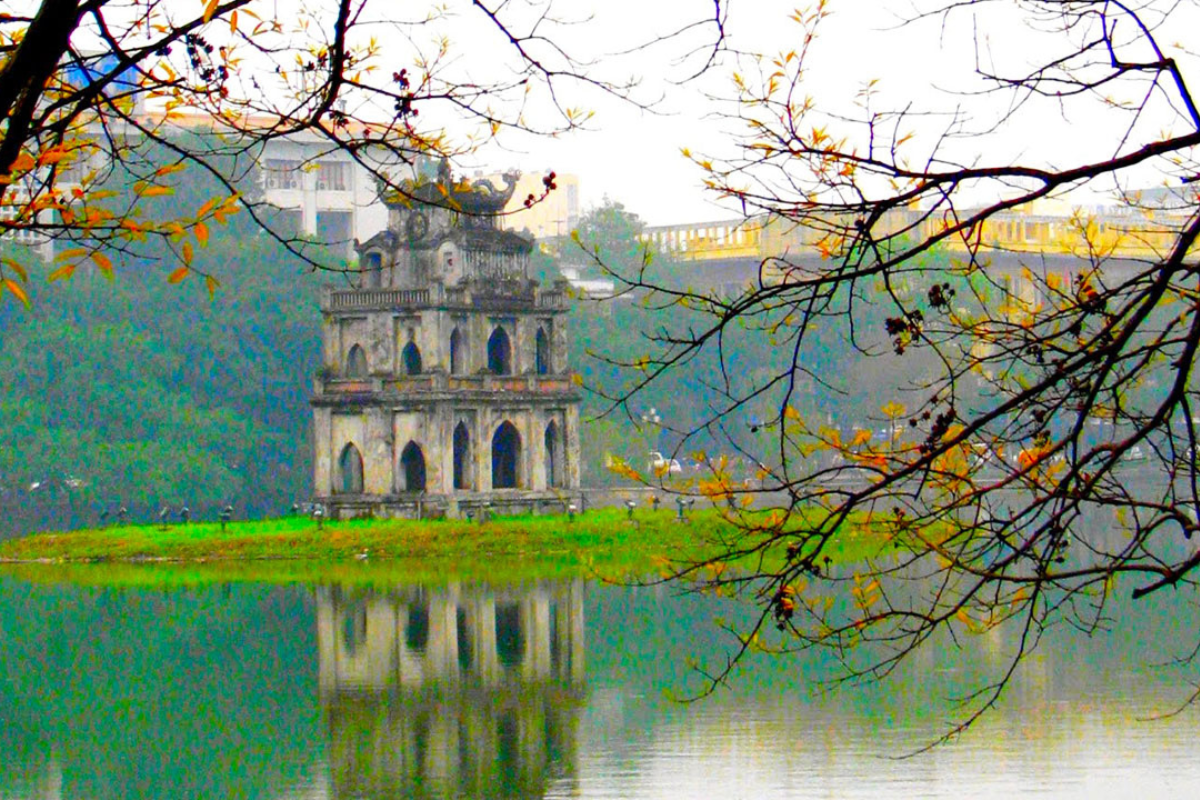
Hoan Kiem Lake
To truly experience the essence of Hanoi, take a leisurely stroll around Hoan Kiem Lake, a picturesque body of water nestled in the heart of the city. This serene oasis offers respite from the urban chaos and is surrounded by lush greenery, historical monuments, and charming cafes where you can relax and soak up the atmosphere.
In conclusion, Hanoi's allure lies in its ability to seamlessly blend French colonial architecture, ancient temples, and bustling markets. Whether you're captivated by the grandeur of the architectural landmarks, seeking spiritual experiences at the ancient temples and pagodas, or immersing yourself in the vibrant energy of the markets, Hanoi promises a unique and unforgettable journey into Vietnam's past and present.
Ha Long Bay:
Ha Long Bay is a renowned destination in Vietnam, known for its picturesque beauty and captivating scenery. Located in the Gulf of Tonkin, it stretches over 1,500 square kilometers and encompasses around 2,000 limestone islands and islets. This natural wonder is hailed as a UNESCO World Heritage Site and is considered a must-see attraction for travelers from all around the globe.
The primary characteristic that sets Ha Long Bay apart is its emerald-green waters. The bay's calm and crystal-clear waters create a stunningly reflective surface that beautifully mirrors the surrounding karst formations, creating a mesmerizing sight. These towering limestone islands, rising sharply from the sea, further enhance the ethereal ambiance of the bay.
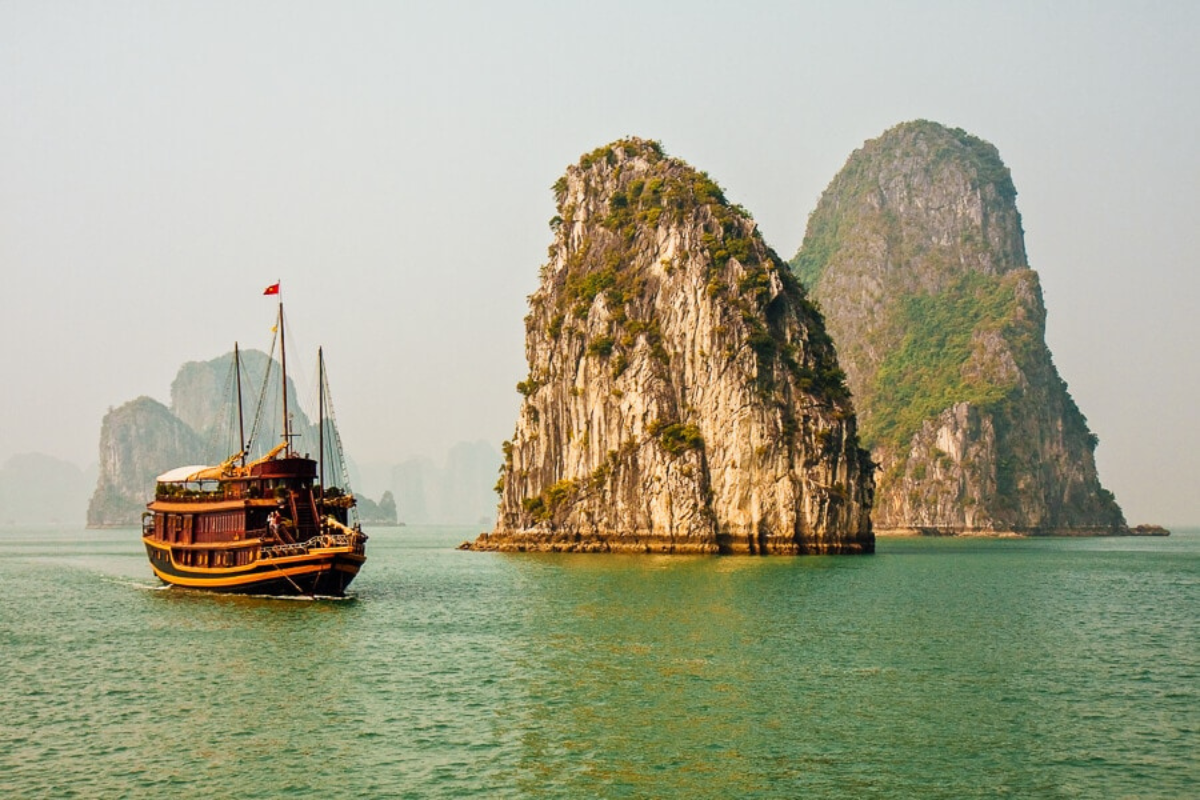
Halong Bay
Each of the limestone islands in Ha Long Bay has its own unique shape, size, and name, adding to the mesmerizing allure of the area. The islands vary from small, uninhabited rocks to larger ones that host fishing villages and communities. Some of the most notable islands include Titop Island, Cat Ba Island, and Fighting Cock Island, each offering distinct landscapes and attractions.
Exploring Ha Long Bay presents an array of exciting activities for visitors. One of the most popular ways to experience the bay is by taking a boat tour or cruise. These tours allow travelers to witness the sheer magnificence of the bay up close while sailing amidst the towering limestone pillars and exploring hidden caves and grottoes. Kayaking is also a favored activity, enabling visitors to navigate through the limestone karsts on their own and discover secluded beaches and pristine lagoons.
One of the highlights of a visit to Ha Long Bay is discovering the enchanting caves scattered throughout the area. The most famous cave is Thien Cung Cave, also known as the Heavenly Palace Cave. This cavernous space is adorned with intricate stalactites and stalagmites, illuminated by colorful lights, creating a mystical atmosphere.

Halong Bay on Cruise
Beyond its captivating natural beauty, Ha Long Bay also offers cultural attractions and experiences. The bay is home to several floating fishing villages, where locals maintain their traditional way of life on houses built atop rafts. Interacting with the fishermen and witnessing their daily routines provides a unique insight into the local culture and creates a memorable experience.
To fully appreciate the grandeur of Ha Long Bay, many visitors choose to spend a night or two on a cruise ship. This allows them to witness the breathtaking sunset and sunrise over the bay, immersing themselves in the tranquility and otherworldly ambiance that this UNESCO World Heritage Site exudes.
In conclusion, Ha Long Bay is an iconic destination known for its emerald waters and towering limestone islands. As a UNESCO World Heritage Site, it offers a must-see experience for travelers seeking to immerse themselves in the mesmerizing beauty of nature. Whether it's exploring the enchanting caves, cruising through the karst formations, or engaging with the local fishing communities, Ha Long Bay promises an unforgettable journey filled with awe-inspiring sights and cultural encounters.
Hoi An:
Hoi An is a charming and enchanting city located in central Vietnam, known for its well-preserved Ancient Town. This historic town showcases a delightful mix of Chinese, Japanese, and Vietnamese influences, reflecting its rich cultural heritage.
The Ancient Town of Hoi An is a UNESCO World Heritage site and is renowned for its exceptional preservation of traditional architecture, which gives visitors a glimpse into the region's past. The town's history dates back over 2,000 years, and it thrived as a bustling trading port during the 15th to 19th centuries. The architecture of Hoi An reflects the diverse cultures that once converged here, resulting in a unique blend of styles.
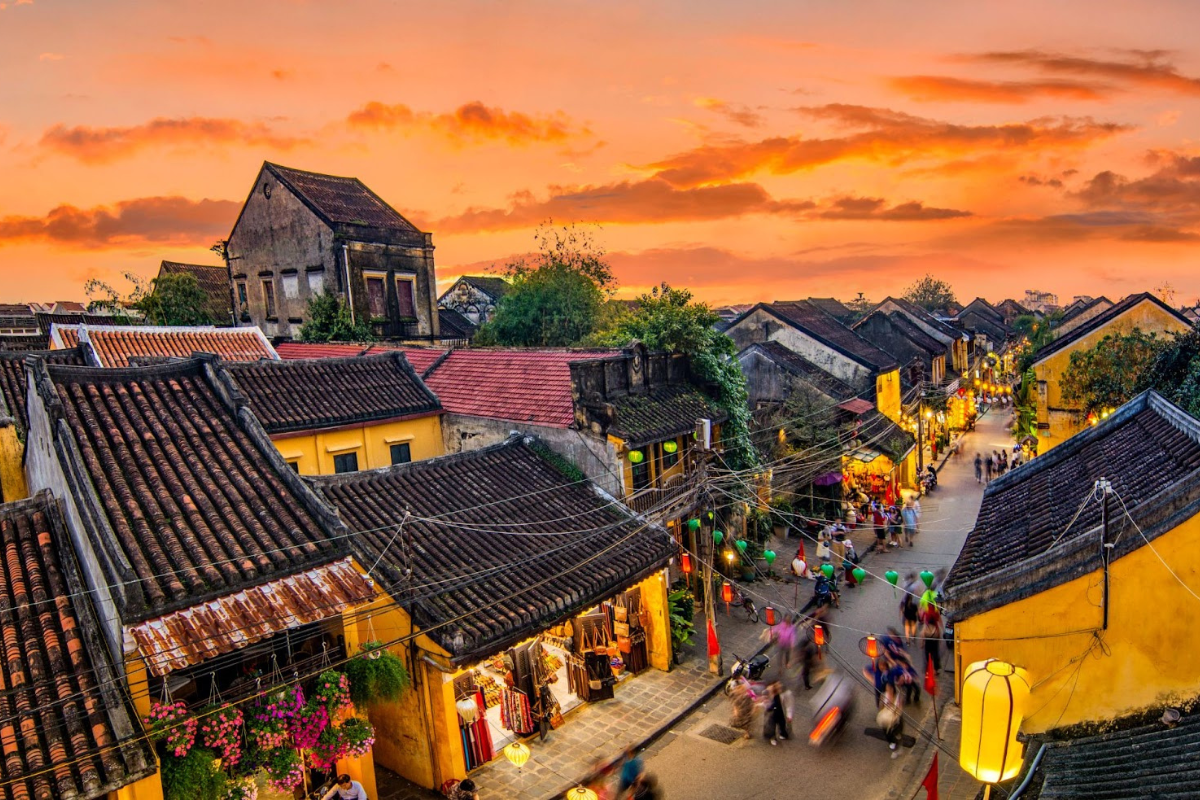
Hoian Ancient Town
Chinese influences are prominent in the architectural elements found throughout Hoi An. Many buildings feature intricate designs, vibrant colors, and decorative motifs reminiscent of ancient Chinese culture. The ornate assembly halls, pagodas, and temples in Hoi An showcase the strong ties to Chinese traditions and religious practices.
Japanese influences can also be seen in Hoi An, particularly in the iconic Japanese Covered Bridge. This bridge, constructed in the 16th century, served as a symbol of friendship between the Japanese and Vietnamese communities. It features distinctive Japanese architectural elements, such as a steep-pitched roof and a small temple-like structure at one end. The bridge stands as a testament to the historical connections between these two nations.
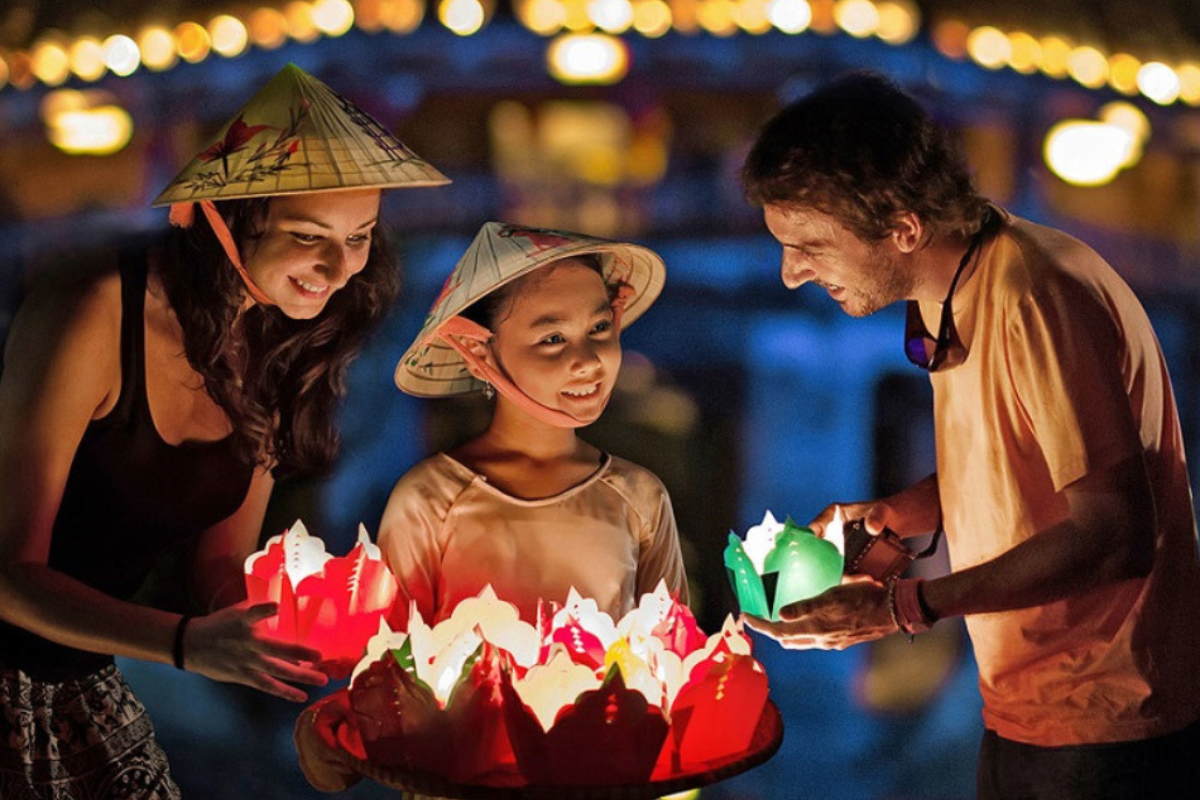
Hoian Lantern Festival
Vietnamese culture and architecture complete the amalgamation of influences in Hoi An. Traditional Vietnamese houses, with their low wooden frames and tile roofs, line the narrow streets of the Ancient Town. These structures reflect the indigenous architectural styles of the region and are often adorned with beautiful lanterns, adding to the town's atmospheric charm.
Apart from its architectural wonders, Hoi An is also famous for its traditional crafts, especially its tailoring and silk products. Visitors can have custom-made clothing created by skilled local tailors using high-quality fabrics. The town is also renowned for its lantern-making industry, with vibrant lanterns adorning the streets and shops, particularly during festive occasions like the Lantern Festival.
The vibrant culinary scene of Hoi An is another highlight. The town's cuisine combines Vietnamese flavors with influences from Chinese and Japanese culinary traditions. Hoi An is known for its delicious local specialties, such as Cao Lau (a regional noodle dish), Banh Mi (Vietnamese baguette sandwich), and White Rose Dumplings. Exploring the local markets and sampling the diverse street food options is a must for any food enthusiast visiting Hoi An.
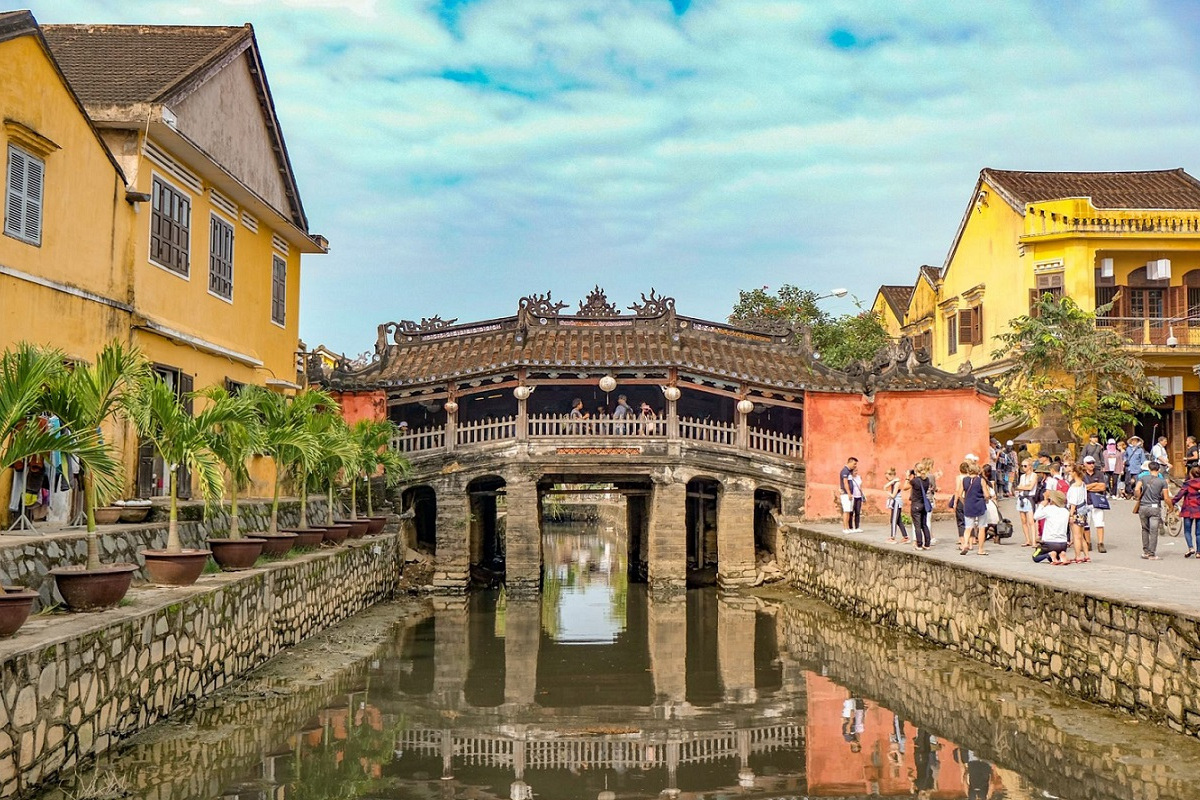
Hoi An's well-preserved Ancient Town, with its fusion of Chinese, Japanese, and Vietnamese influences, offers a unique and captivating experience for visitors. Its architectural beauty, cultural heritage, traditional crafts, and culinary delights make it one of Vietnam's most enchanting destinations, attracting travelers from around the world who seek to immerse themselves in its timeless charm.
Hue:
Hue, located in central Vietnam, is a city renowned for its rich historical and cultural significance. It served as the imperial capital of the country during the Nguyen Dynasty from 1802 to 1945. Hue offers visitors a captivating journey through Vietnam's imperial past, allowing them to immerse themselves in the grandeur and majesty of ancient times.
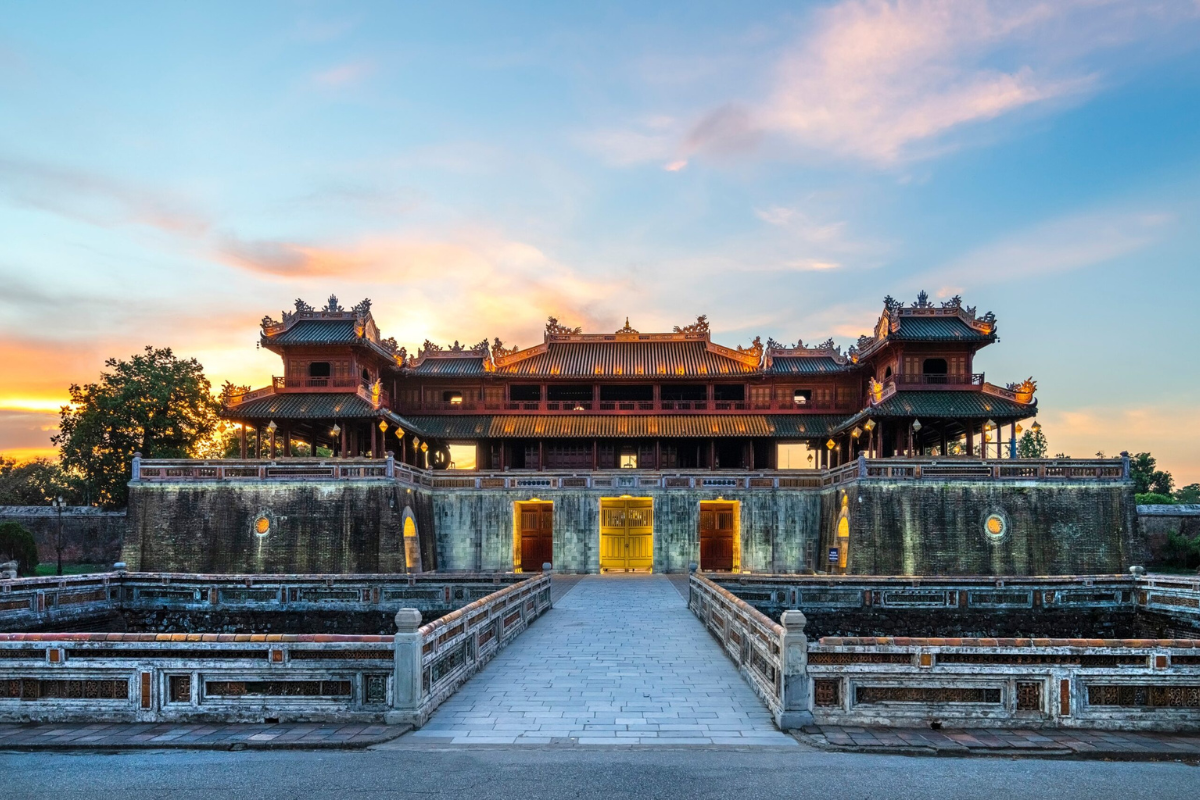
Hue Citaldel
One of the must-visit attractions in Hue is the Citadel, a vast complex that was once the political and administrative center of the Nguyen Dynasty. This UNESCO World Heritage Site showcases the architectural brilliance of Vietnamese craftsmanship. Enclosed within fortified walls and a moat, the Citadel houses numerous palaces, temples, pavilions, and other structures, each reflecting a unique blend of Vietnamese and Chinese architectural styles. Exploring this sprawling complex allows visitors to gain insight into the opulent lifestyle of the imperial era.
Within the Citadel, the Imperial City stands as the heart of the complex. This section was exclusively reserved for the emperor, his family, and high-ranking officials. The Imperial City features ornate gates, beautiful gardens, and stunning buildings such as the Thai Hoa Palace (Hall of Supreme Harmony), where important ceremonies and events took place. Walking through the Imperial City offers an awe-inspiring experience and transports visitors back in time to the days of emperors and courtly life.
Another remarkable highlight of Hue's imperial past lies in its royal tombs. Scattered along the Perfume River, these tombs were constructed as grand mausoleums for the Nguyen emperors. Each tomb boasts unique architectural styles and represents the individual personality and preferences of the respective emperors. The most famous among them include the Tomb of Emperor Tu Duc, known for its tranquil setting and intricate design, and the Tomb of Emperor Khai Dinh, notable for its fusion of traditional Vietnamese and European influences.
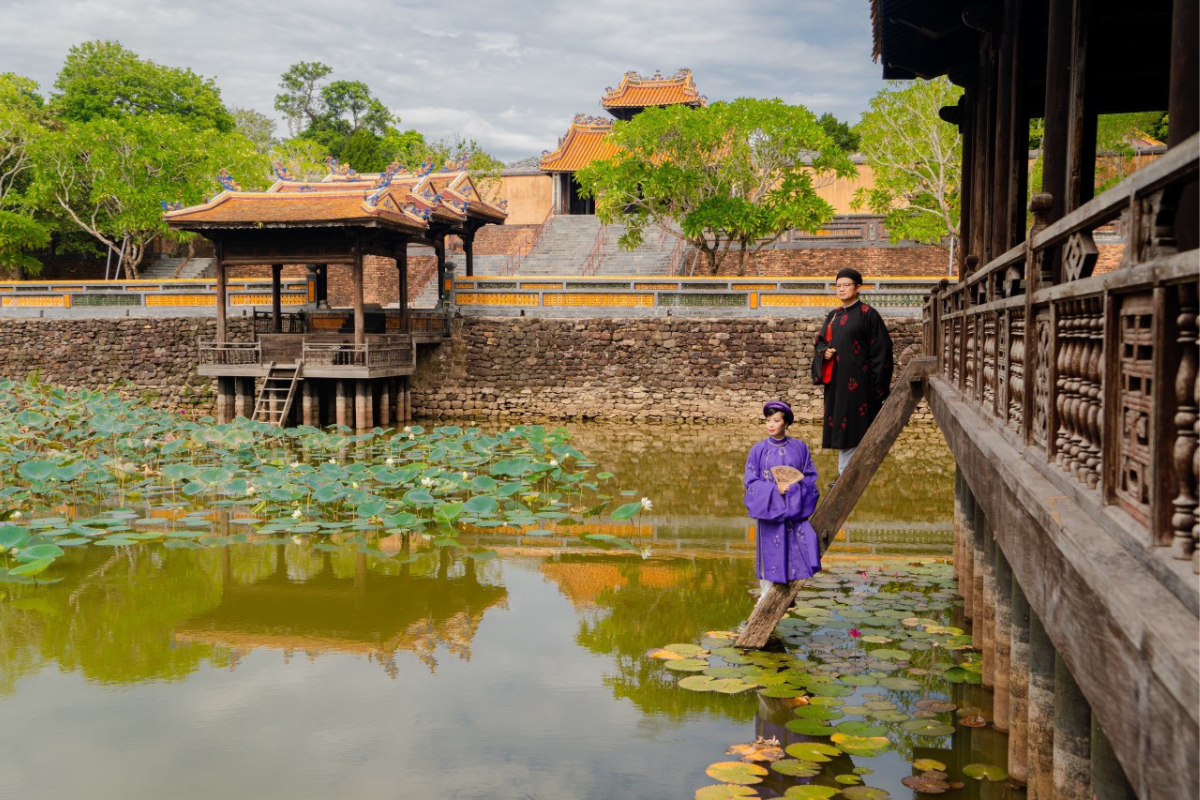
Tu Duc Tomb
Exploring the royal tombs not only provides an opportunity to witness the splendid architecture and craftsmanship but also offers a chance to appreciate the picturesque natural surroundings. Many of the tombs are nestled amidst lush gardens, serene lakes, and rolling hills, creating a harmonious blend of nature and man-made beauty.
Aside from its historical attractions, Hue's vibrant local culture and culinary scene add to its allure. The city has preserved traditional art forms such as royal court music, which visitors can experience through performances held at various venues. Additionally, Hue's cuisine is renowned for its delicate flavors and unique dishes, influenced by the imperial court's refined taste. Exploring the local markets and street food stalls allows visitors to savor authentic Hue specialties like banh khoai (Hue-style pancakes) and bun bo Hue (spicy beef noodle soup).
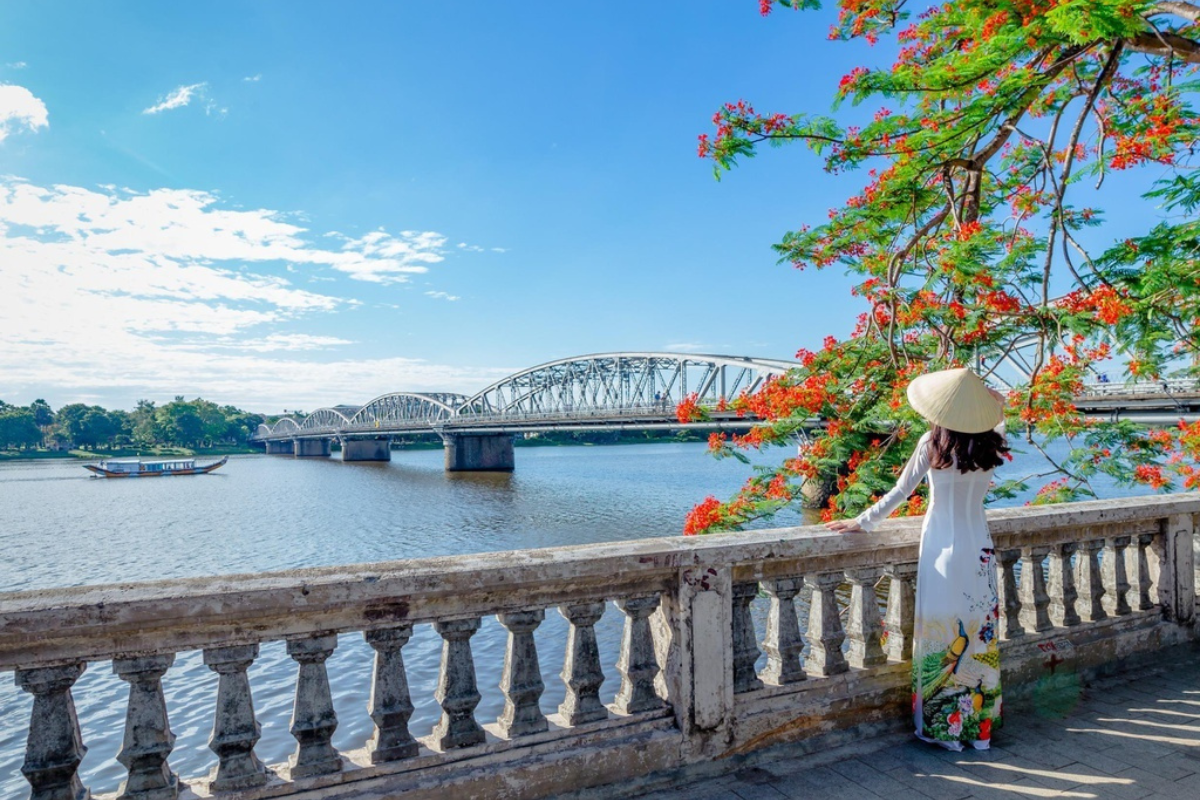
Perfume River
To fully immerse yourself in Vietnam's imperial past, it is recommended to spend several days exploring Hue. The city offers a range of accommodations, from luxury resorts to budget-friendly guesthouses, enabling visitors to find a suitable option based on their preferences and budget. Exploring Hue on foot or by bicycle provides a more intimate experience and allows for the discovery of hidden gems within the city.
Overall, Hue presents a remarkable opportunity to delve into Vietnam's imperial history. Through visits to the Citadel, Imperial City, and royal tombs, travelers can gain a deeper understanding of the country's rich cultural heritage. The combination of architectural splendor, natural beauty, and culinary delights makes Hue an unforgettable destination for those seeking to explore Vietnam's imperial past.
Ho Chi Minh City (Saigon City):
Ho Chi Minh City, formerly known as Saigon, is a dynamic and vibrant metropolis located in southern Vietnam. It serves as the economic and cultural hub of the country, attracting visitors from all over the world with its bustling street life, rich history, and remarkable landmarks.
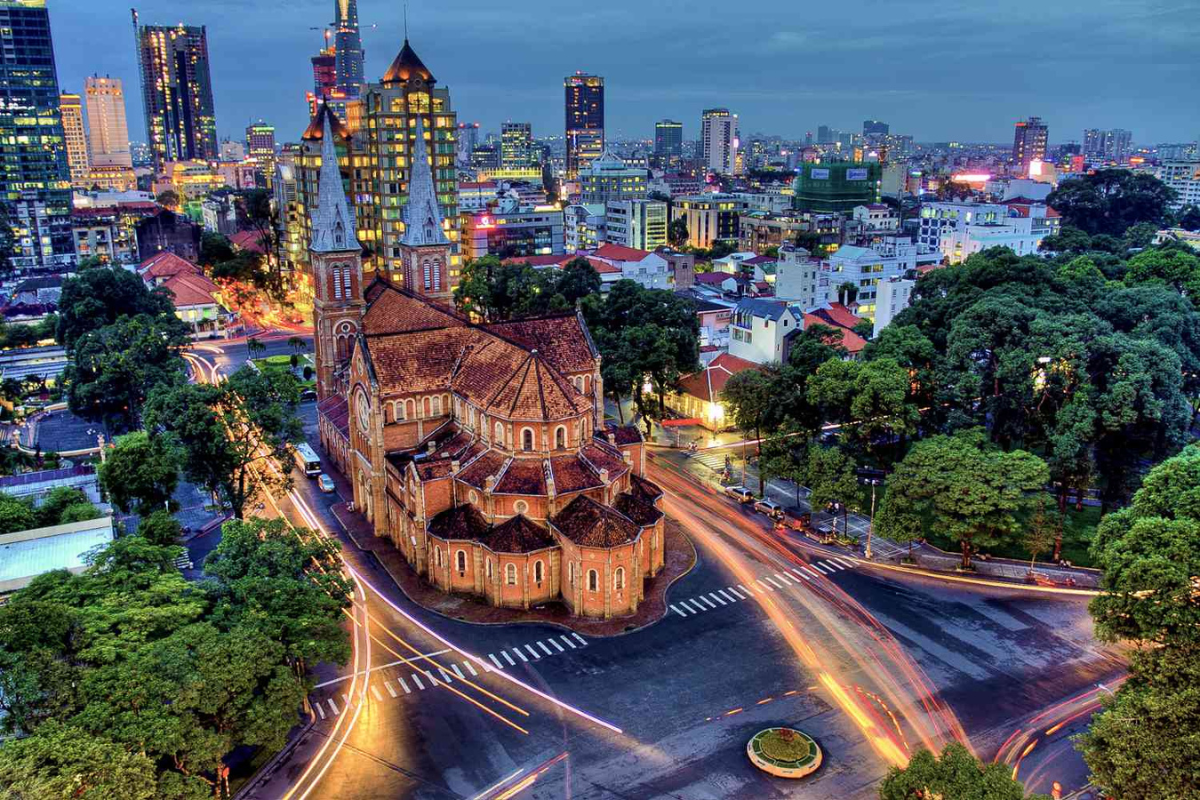
Ho Chi Minh CIty
The city's transformation into Ho Chi Minh City came about after the end of the Vietnam War in 1975 when the North Vietnamese forces captured Saigon, which was then the capital of South Vietnam. As part of the reunification process, the city was renamed to honor Ho Chi Minh, the revered leader of the Communist Party and the first President of North Vietnam.
One of the most striking aspects of Ho Chi Minh City is its energetic street life. The bustling streets are filled with a constant stream of motorcycles, cars, bicycles, and pedestrians, creating a unique and lively atmosphere. The city's vibrant markets, such as Ben Thanh Market, offer a colorful array of goods, from fresh produce to traditional handicrafts, where locals and tourists alike can immerse themselves in the sights, sounds, and smells of Vietnamese culture.
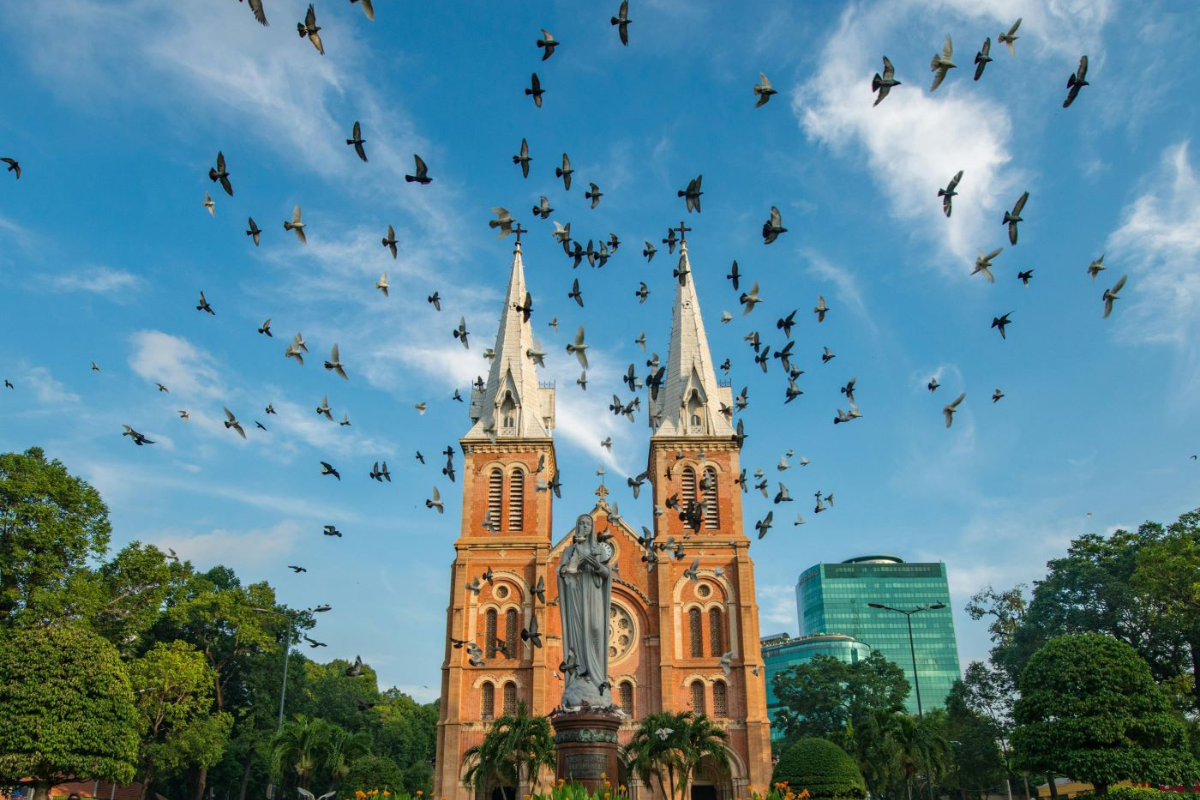
The Notre-Dame Cathedral Basilica of Saigon
Ho Chi Minh City boasts an array of historical landmarks that reflect its complex past. The Reunification Palace, also known as Independence Palace, played a significant role in the Vietnam War and witnessed the end of the conflict. It stands as a symbol of both the war's legacy and the country's journey towards reunification. Another iconic landmark is the Notre-Dame Cathedral Basilica of Saigon, a magnificent Gothic-style cathedral built during the French colonial period. Its twin bell towers rise majestically over the cityscape, offering a glimpse into Vietnam's architectural heritage.
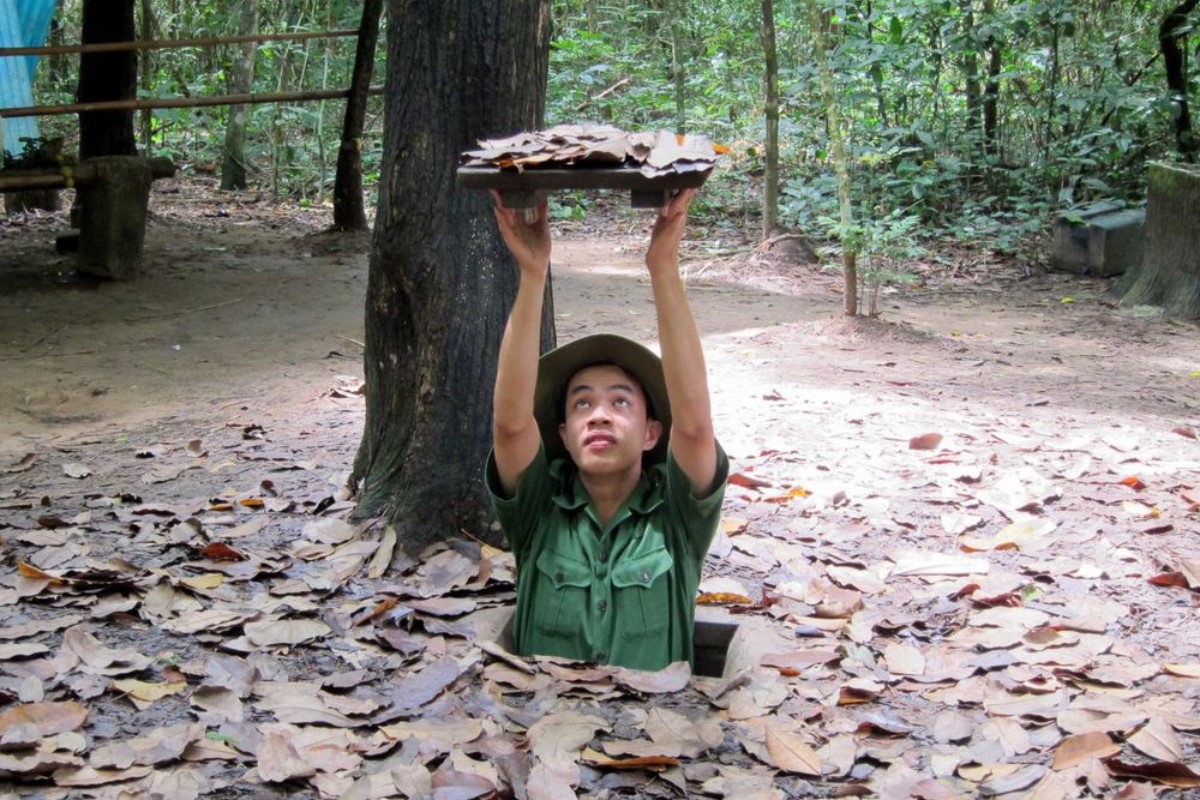
Cu Chi Tunnels
Visitors to Ho Chi Minh City can explore the Cu Chi Tunnels, an intricate network of underground tunnels used by the Viet Cong guerrillas during the Vietnam War. These tunnels provide a harrowing insight into the hardships endured by soldiers and civilians during the conflict. Additionally, the War Remnants Museum offers a sobering collection of artifacts and exhibitions that shed light on the war's impact on Vietnam and its people.
Beyond its historical significance, Ho Chi Minh City is a thriving cultural center. It boasts a vibrant arts scene with numerous art galleries, theaters, and music venues. The city is also known for its delectable cuisine, from street food stalls serving banh mi sandwiches and pho noodle soup to upscale restaurants offering a fusion of traditional Vietnamese flavors with international influences.
In recent years, Ho Chi Minh City has experienced rapid development and urbanization, with modern skyscrapers towering alongside colonial-era buildings. The city's skyline continues to evolve, reflecting Vietnam's growing status as an economic powerhouse in Southeast Asia.
Overall, Ho Chi Minh City encapsulates the essence of Vietnam's past, present, and future. Its bustling streets, historical landmarks, cultural attractions, and culinary delights make it an irresistible destination for travelers seeking a captivating blend of tradition and modernity.
Top Cultural Experiences in Vietnam
To truly immerse yourself in the rich cultural heritage of Vietnam, be sure to:
1. Visit Local Markets:
Explore the vibrant and bustling markets like Ben Thanh Market in Ho Chi Minh City or Dong Xuan Market in Hanoi. These markets offer a truly authentic experience, allowing you to engage with the local vendors, witness the lively atmosphere, and discover a vast array of traditional Vietnamese goods, from fresh produce to handicrafts. Embrace the sights, sounds, and flavors that make these markets a quintessential part of Vietnamese culture.
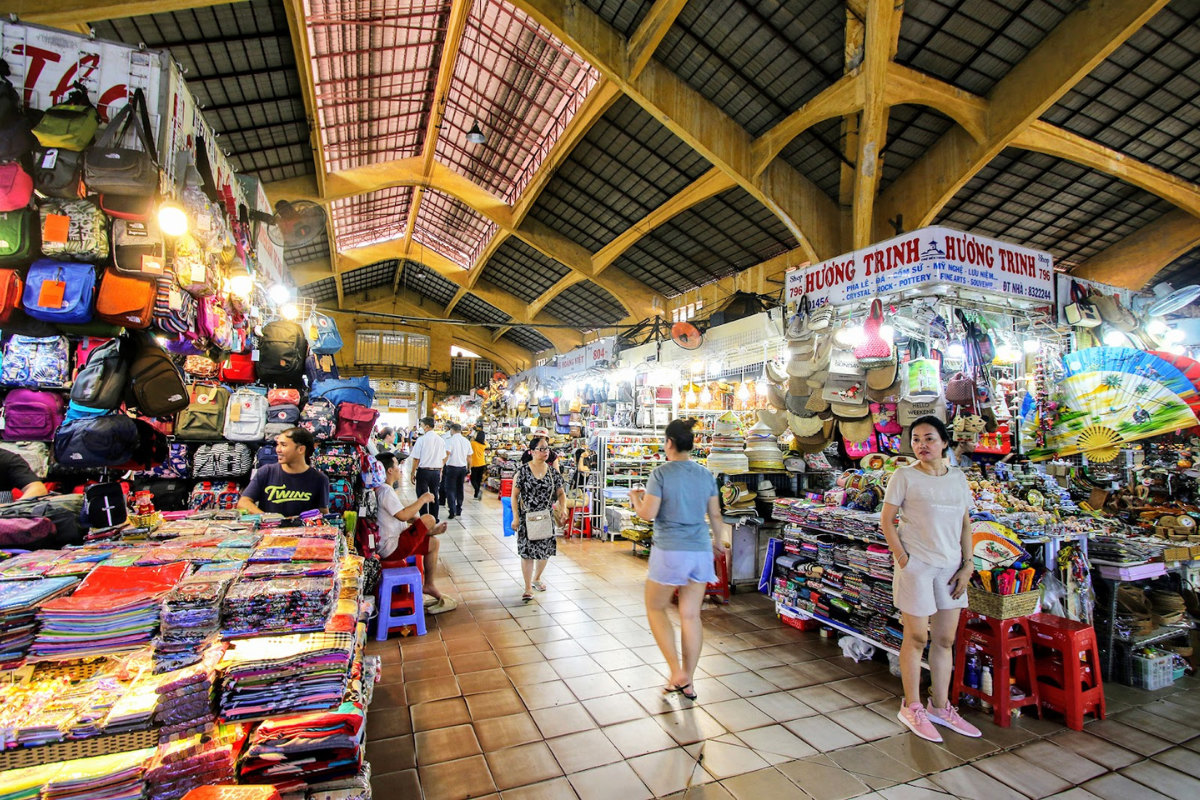
Ben Thanh Market
2. Attend a Traditional Water Puppet Show:
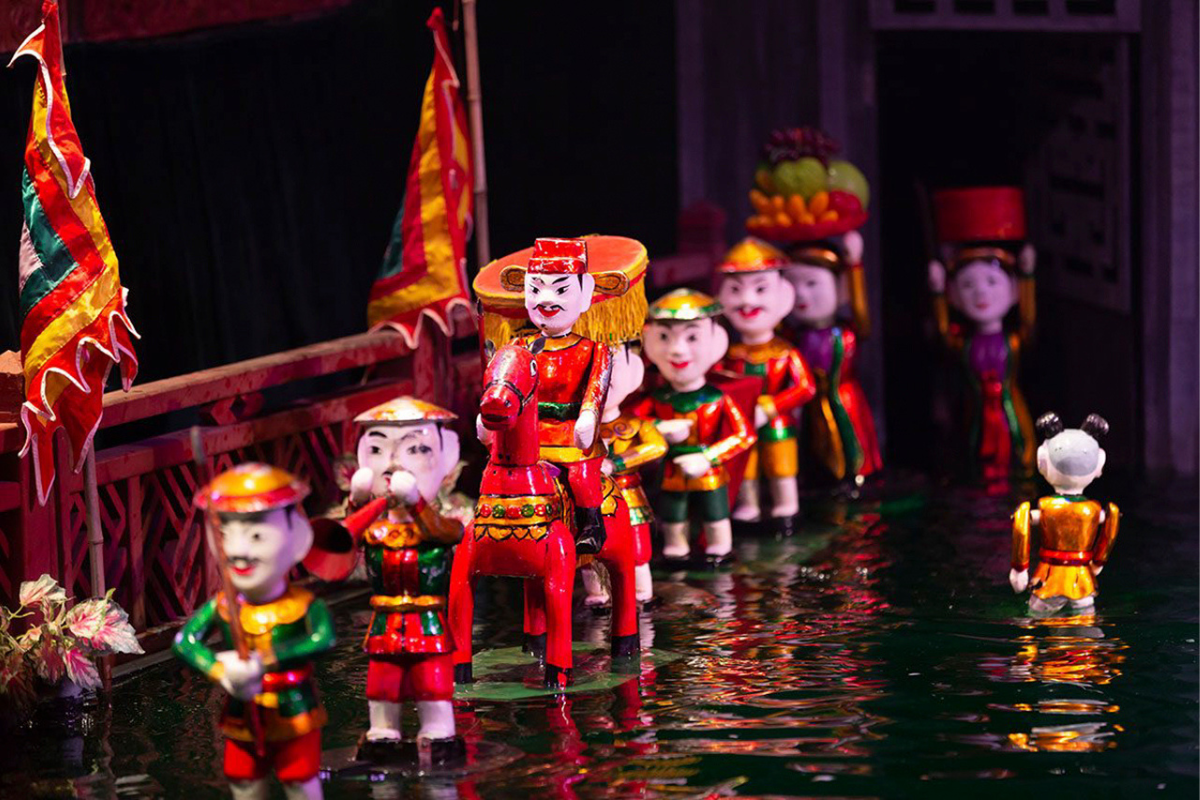
Water Puppet Show
Witness the captivating art form of water puppetry, which dates back centuries and depicts Vietnamese folklore stories through the mesmerizing performance of puppets on water. This unique and visually stunning experience provides a glimpse into the country's rich cultural traditions and storytelling heritage.
3. Participate in a Cooking Class:
Learn to prepare beloved Vietnamese dishes like pho (noodle soup) or spring rolls under the guidance of local culinary experts. Immersing yourself in the art of Vietnamese cuisine is a fantastic way to not only develop your cooking skills but also bring the authentic flavors of Vietnam back home with you.
4. Visit Pagodas and Temples:
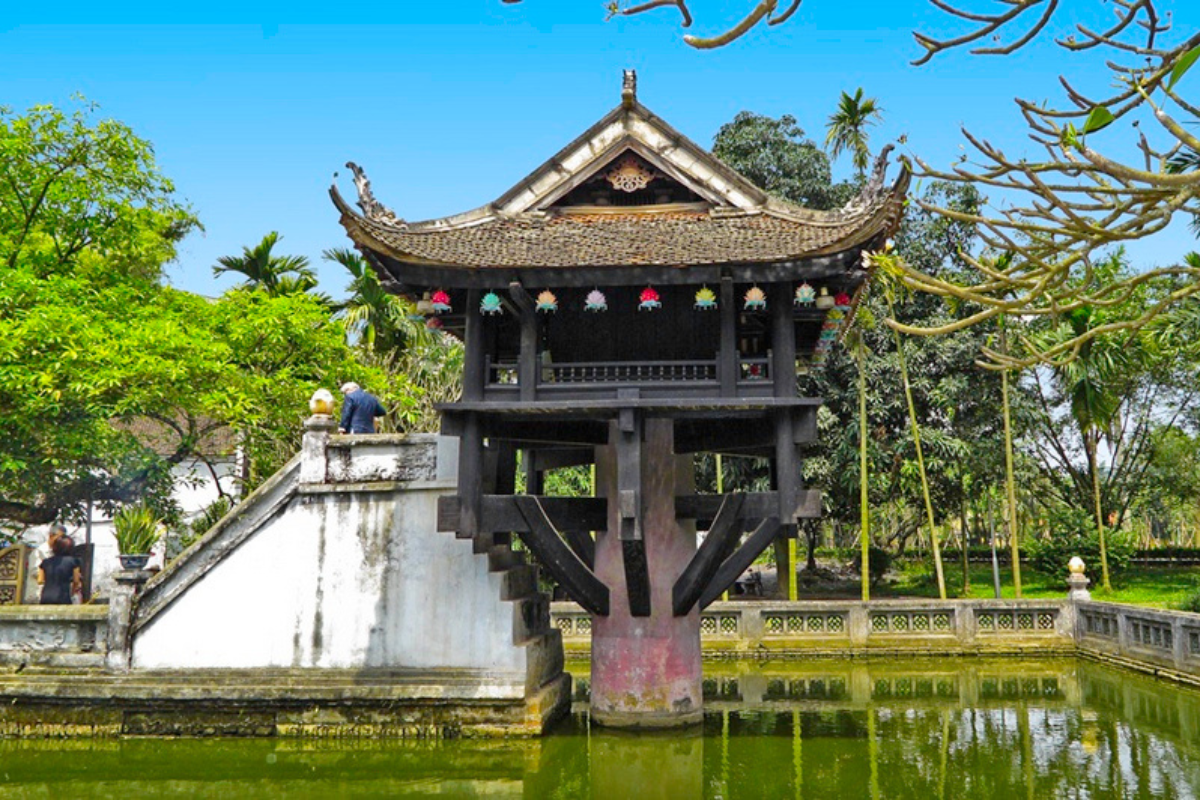
One Pillar Pagoda
Engage in spiritual and cultural experiences by visiting the sacred sites of Vietnam, such as the Perfume Pagoda or the iconic One Pillar Pagoda in Hanoi. These architectural marvels serve as important centers of Buddhist and Taoist worship, offering visitors a deeper understanding of the country's religious and philosophical traditions.
By embracing these cultural experiences, you will have the opportunity to forge a meaningful connection with the heart and soul of Vietnam, creating memories that will last a lifetime.
Traditional Vietnamese Cuisine to Savor:
Vietnamese cuisine is a delightful and diverse culinary experience that offers a wide range of flavors, textures, and ingredients. It reflects the country's rich history, influenced by various cultures such as Chinese, French, and Southeast Asian, while maintaining its unique identity. If you're looking to embark on a gastronomic journey through the vibrant world of Vietnamese food, here are some traditional dishes that you must try:
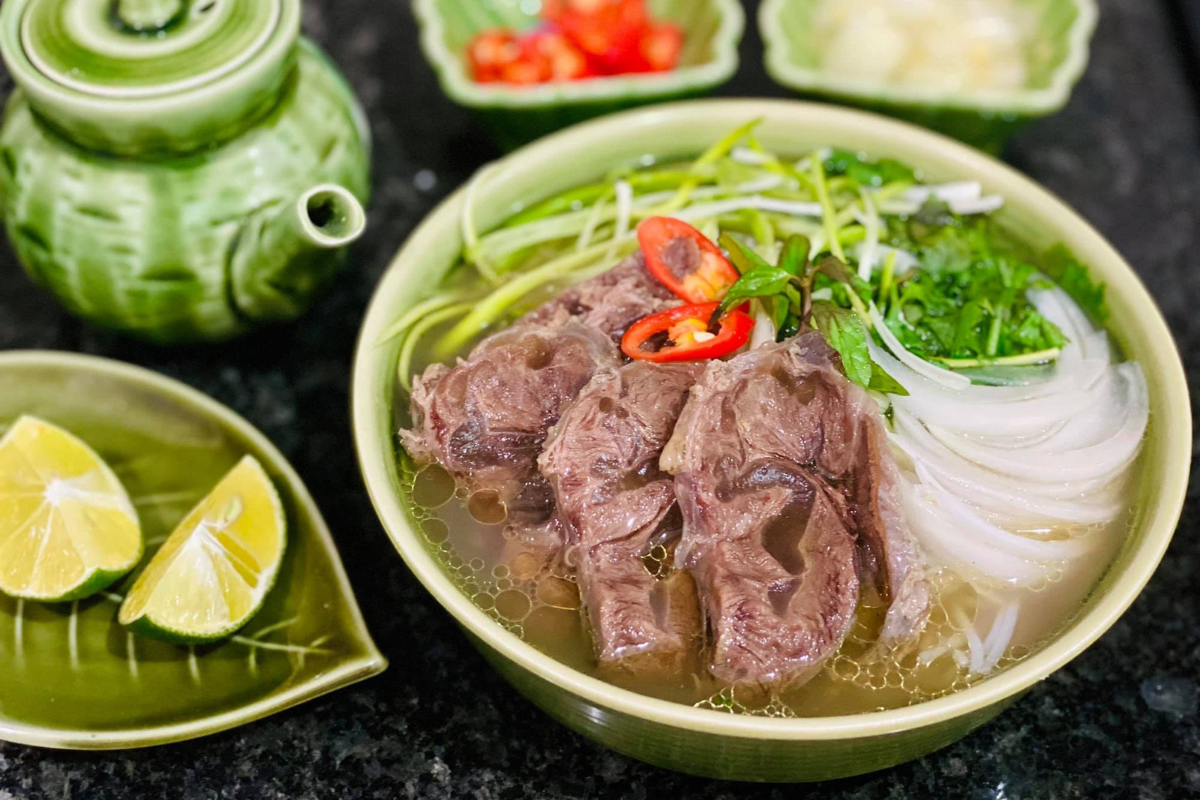
Pho - Vietnamese Noodle
- Pho: Considered Vietnam's unofficial national dish, pho is a hearty and aromatic noodle soup that epitomizes the essence of Vietnamese cuisine. It consists of flat rice noodles, tender slices of beef or chicken, and a flavorful broth infused with spices like star anise, cinnamon, and cloves. Pho is typically garnished with fresh herbs, bean sprouts, lime wedges, and chili sauce, allowing you to customize the taste to your liking.
- Banh Mi: A delicious fusion of French and Vietnamese culinary influences, banh mi is a mouthwatering sandwich served on a crusty baguette. It features a variety of fillings, including grilled meats (such as pork belly or lemongrass-marinated chicken), pâté, pickled vegetables (carrots and daikon radish), cilantro, and mayonnaise. The combination of flavors and textures in banh mi creates a perfect balance that will leave you craving more.
- Bun Cha: Originating from Hanoi, bun cha is a popular dish consisting of grilled pork patties, vermicelli noodles, fresh herbs, and a dipping sauce. The pork patties are marinated in a mixture of fish sauce, garlic, sugar, and other seasonings before being grilled to perfection. When enjoying bun cha, you dip the noodles and herbs into the savory sauce and savor the flavorful pork patties.
- Cao Lau: Hailing from the ancient city of Hoi An, cao lau is a regional specialty that showcases the area's culinary traditions. This dish features thick rice noodles, slices of pork, tender greens, bean sprouts, and crispy croutons, all placed in a savory broth made from pork bones. Cao lau stands out due to the unique texture of its noodles, which are crafted using water from a specific local well.
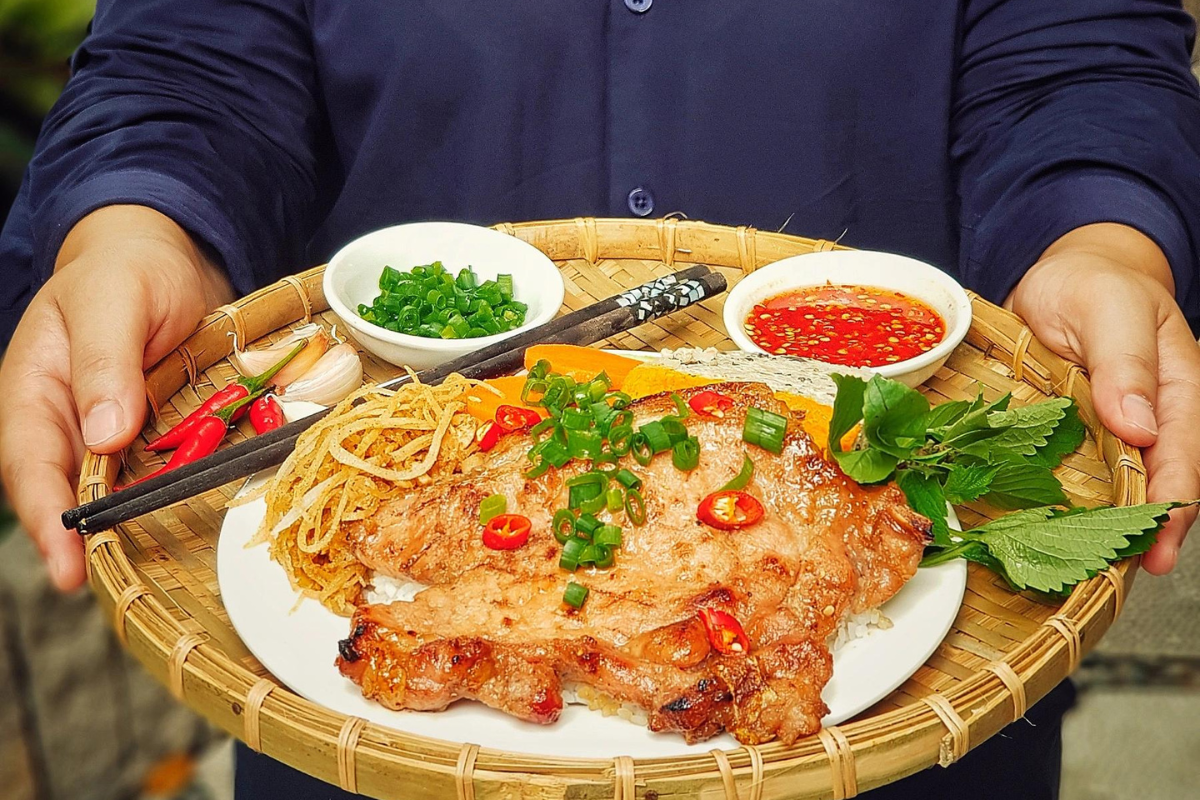
Com Tam - broken rice
- Com Tam: Known as "broken rice," com tam is a beloved Vietnamese dish that originated in Southern Vietnam. It comprises fragrant rice with fractured grains (hence the name), grilled pork chop, a fried egg, pickled vegetables, and a side of fish sauce-based dipping sauce. The combination of flavors and textures makes com tam a delightful and satisfying meal.
- Goi Cuon: Also known as fresh spring rolls or summer rolls, goi cuon is a popular Vietnamese appetizer or snack. These translucent rice paper rolls are filled with a variety of ingredients, including shrimp, pork, fresh herbs (such as mint and cilantro), lettuce, and vermicelli noodles. Goi cuon is often served with a peanut dipping sauce that adds a delightful nutty flavor to each bite.
- Cha Ca: Originating from Hanoi, cha ca is a unique and flavorful dish featuring turmeric-marinated fish (usually catfish) sautéed with dill and served on a sizzling hot plate. It is typically accompanied by a variety of condiments like rice noodles, peanuts, fresh herbs, and shrimp paste. The combination of aromatic flavors and contrasting textures makes cha ca an unforgettable experience.
These traditional Vietnamese dishes represent just a fraction of the country's culinary repertoire. Vietnamese cuisine is incredibly diverse, with regional specialties varying across the country. From vibrant street food stalls to upscale restaurants, exploring the world of Vietnamese cuisine will undoubtedly take you on a gastronomic adventure that celebrates the rich cultural heritage of this captivating destination.
Traveling on a Budget in Vietnam:
Vietnam offers excellent value for budget-conscious travelers. Here are some tips to make the most of your money:
- Stay in budget accommodations: Opt for guesthouses or homestays instead of luxury hotels. These options provide comfortable stays while saving you money.
- Eat like a local: Street food stalls and local eateries offer authentic and affordable dining experiences.
- Use public transportation: Buses and trains are cost-effective ways to get around. They also allow you to experience local life.
Vietnam's Stunning Natural Landscapes:
From majestic mountains to pristine beaches, Vietnam is blessed with breathtaking natural landscapes. Consider visiting:
- Sapa: Trek through terraced rice fields and interact with ethnic minority communities in this mountainous region.
- Phong Nha-Ke Bang National Park: Explore the impressive cave systems, including Son Doong, the world's largest cave.
- Mekong Delta: Take a boat tour along the Mekong River, marveling at its lush greenery and floating markets.
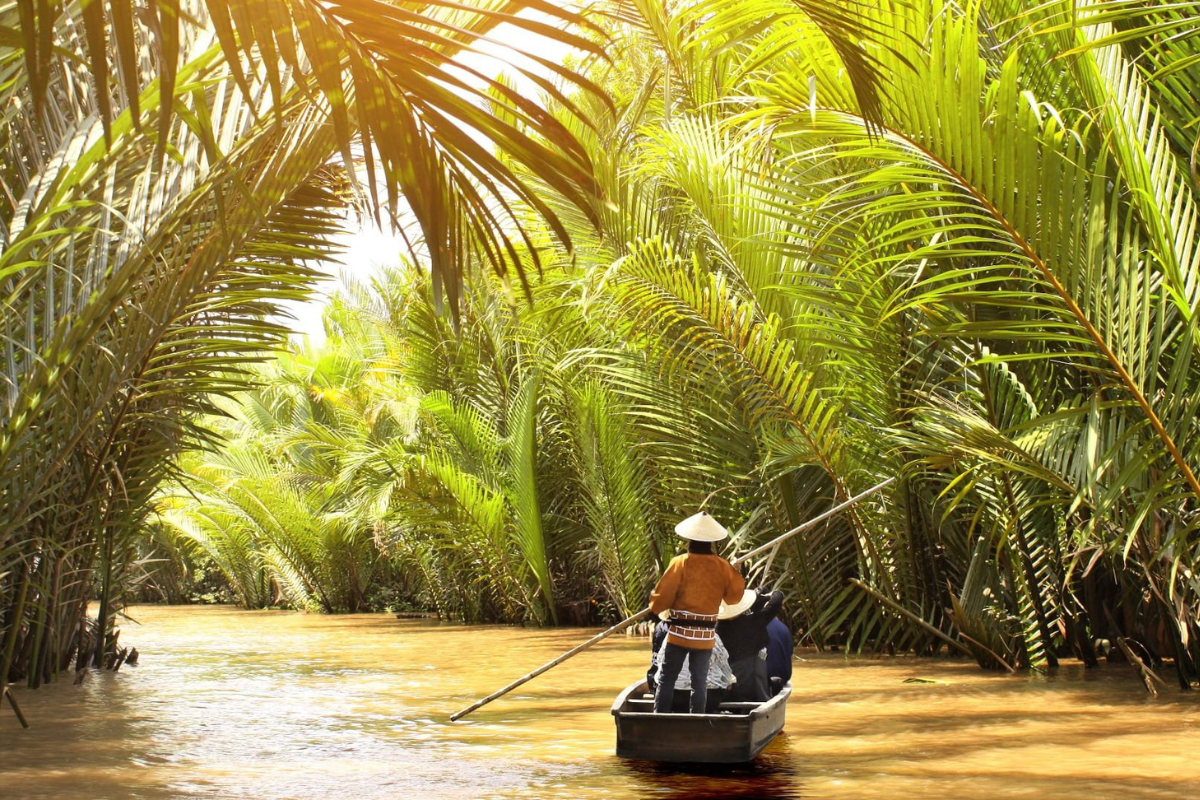
Mekong Delta
Tips for Navigating Transportation in Vietnam:
Getting around Vietnam can be an adventure in itself. Here are some transportation tips:
- Motorbike taxis (xe om): These are popular modes of transportation in cities. Ensure you negotiate the fare before hopping on.
- Grab or GoViet: Utilize ride-hailing apps for convenient and reliable transportation within cities.
- Trains and buses: Book tickets in advance, especially during peak travel seasons. Sleeper trains are a great option for long-distance journeys.
Important Customs and Etiquette in Vietnam:
- Respecting Vietnamese customs and etiquette is essential. Here are a few guidelines to follow:
- Dress modestly when visiting temples or religious sites, covering your shoulders and knees as a sign of respect.
- Remove your shoes before entering someone's home or a temple.
- Greet people with a slight bow and a friendly smile. Handshakes are also acceptable in more formal settings.
- Avoid public displays of affection, as they are considered inappropriate in Vietnamese culture.
- Use both hands when giving or receiving items, particularly when exchanging money.
Exploring Vietnam's Historical Sites:
Vietnam's history is captivating, and there are numerous historical sites worth exploring:
- The Cu Chi Tunnels: Delve into the underground network used by the Viet Cong during the Vietnam War. Learn about guerrilla warfare tactics and gain insight into the country's past.
- The Imperial City of Thang Long: Located in Hanoi, this UNESCO World Heritage Site was the political and cultural center of Vietnam for over a millennium.
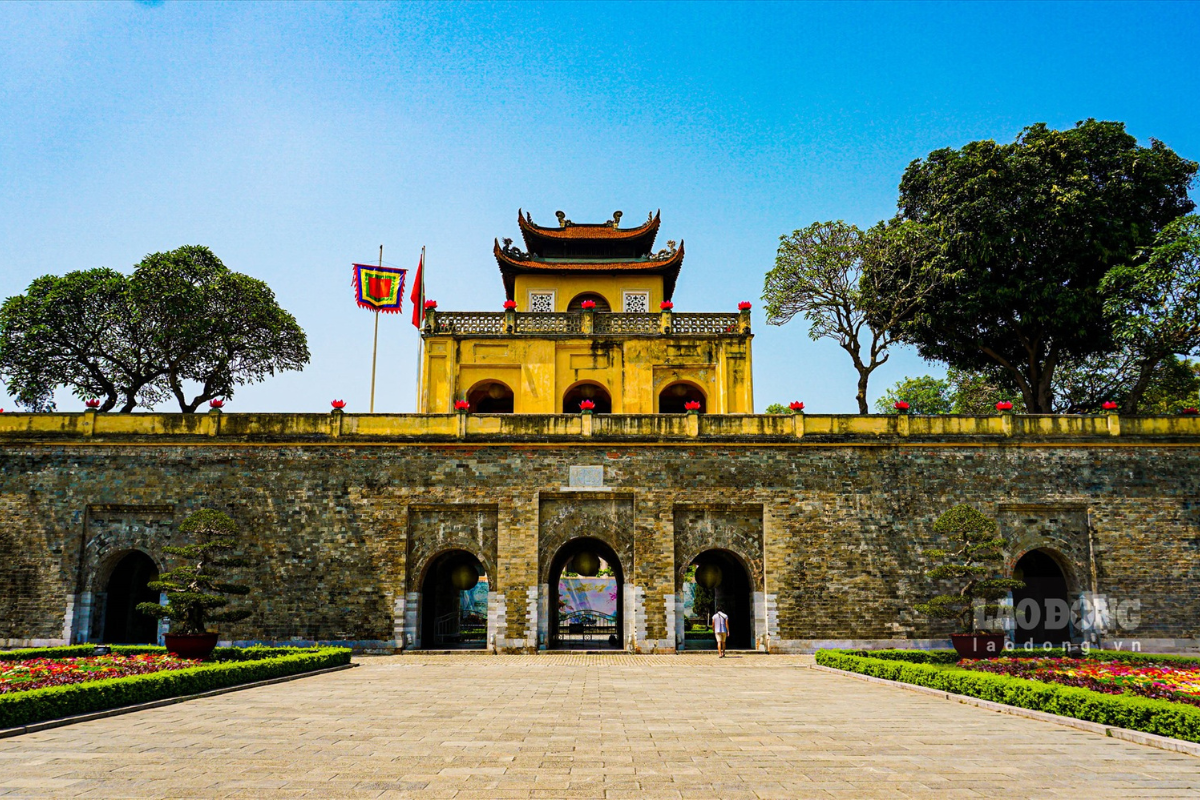
The Imperial City of Thang Long
- The War Remnants Museum: Gain a comprehensive understanding of the Vietnam War through powerful exhibits and photographs in Ho Chi Minh City.
- The Citadel of Hué: Explore the ancient citadel, a UNESCO site, which offers a glimpse into Vietnam's imperial history.
Safety Tips for Travelers in Vietnam:
Vietnam is a beautiful and diverse country with a rich cultural heritage, stunning landscapes, and vibrant cities. While it generally offers a safe travel experience, it's always important to take certain precautions to ensure your safety and well-being during your visit. Here are some valuable safety tips for travelers in Vietnam:
- Research and Plan Ahead: Before you embark on your journey, conduct thorough research about the destinations you plan to visit in Vietnam. Familiarize yourself with local customs, traditions, laws, and potential risks. Make note of emergency contact numbers and addresses of your embassy or consulate in case you need assistance.
- Get Travel Insurance: It is essential to have comprehensive travel insurance that covers medical emergencies, trip cancellations, and theft or loss of belongings. Ensure your insurance policy is valid for the entirety of your stay in Vietnam.
- Stay Up-to-Date with Travel Advisories: Check the latest travel advisories and updates from your home country's government regarding Vietnam. These advisories provide vital information about safety concerns, health risks, and any potential political or social unrest in specific regions.
- Secure Your Belongings: Keep your valuables, such as passports, travel documents, cash, and electronics, secure at all times. Use hotel safes or secure lockers to store your items when not in use. Be cautious of pickpockets in crowded areas and avoid displaying expensive jewelry or carrying large amounts of cash.
- Be Cautious with Transportation: When using public transportation, choose reputable companies and modes of transport. Avoid unlicensed taxis or motorcycles, especially if you're traveling alone. Always negotiate the fare before getting into a taxi and opt for metered taxis whenever possible. If renting a motorbike, wear a helmet, drive defensively, and obey traffic rules.
- Stay Hydrated and Mindful of Food Safety: Drink bottled water and avoid tap water, especially in rural areas. Be cautious when consuming street food; eat at busy stalls with high turnover to ensure freshness and proper hygiene. It's advisable to wash fruits and vegetables or opt for cooked meals from reputable establishments.
- Respect Local Customs and Laws: Familiarize yourself with Vietnamese customs and traditions to show respect to the local culture. Dress modestly when visiting religious sites and remove your shoes when required. Abide by local laws and regulations, including drug laws, as penalties for drug-related offenses are severe in Vietnam.
- Stay Vigilant in Crowded Areas: Vietnam's bustling markets and tourist attractions can be crowded, making it an opportune time for pickpockets. Keep a close eye on your belongings, wear backpacks on your front, and use anti-theft bags if possible. Avoid flashing expensive items or engaging in public displays of wealth that might attract unwanted attention.
- Communicate and Share Your Itinerary: Inform someone you trust about your travel plans and share your itinerary with them. Regularly check in with them during your trip, especially if you're traveling alone. This provides an additional safety net in case of any unforeseen circumstances.
- Trust Your Instincts: Trust your gut instincts and be aware of your surroundings. If a situation or place feels unsafe, it's better to err on the side of caution and remove yourself from the situation. Avoid walking alone late at night in unfamiliar areas and consider using licensed transportation or arranging for a safe ride back to your accommodation.
By following these safety tips, you can enhance your travel experience in Vietnam while minimizing potential risks. Remember, being well-prepared and exercising caution will help ensure a safe and enjoyable journey in this beautiful country.
Travel Documents Information for Filipino tourists to Vietnam:
- Passport must be valid for at least 6 months beyond the intended stay.
- Visa is not required for Philippine passport holders traveling to VIETNAM.
- Foreign passport holders may need to secure one of the following (if applicable):
- Valid Philippine passport (if dual nationality)
- Valid Alien Certificate of Registration (I-CARD)
- All travelers need a return ticket to their country of origin.
- Additional immigration documents may be required to support your travel.
- Minors under 18 not traveling with parents need to secure a DSWD Clearance.
- Government employees need to secure a Travel Authority.
Other Reminders:
- Passengers must check the validity of their own travel documents.
- Passengers will be responsible for any charges or damages caused by invalid or expired documents.


